1
Polar bear
Ursus maritimus
VU
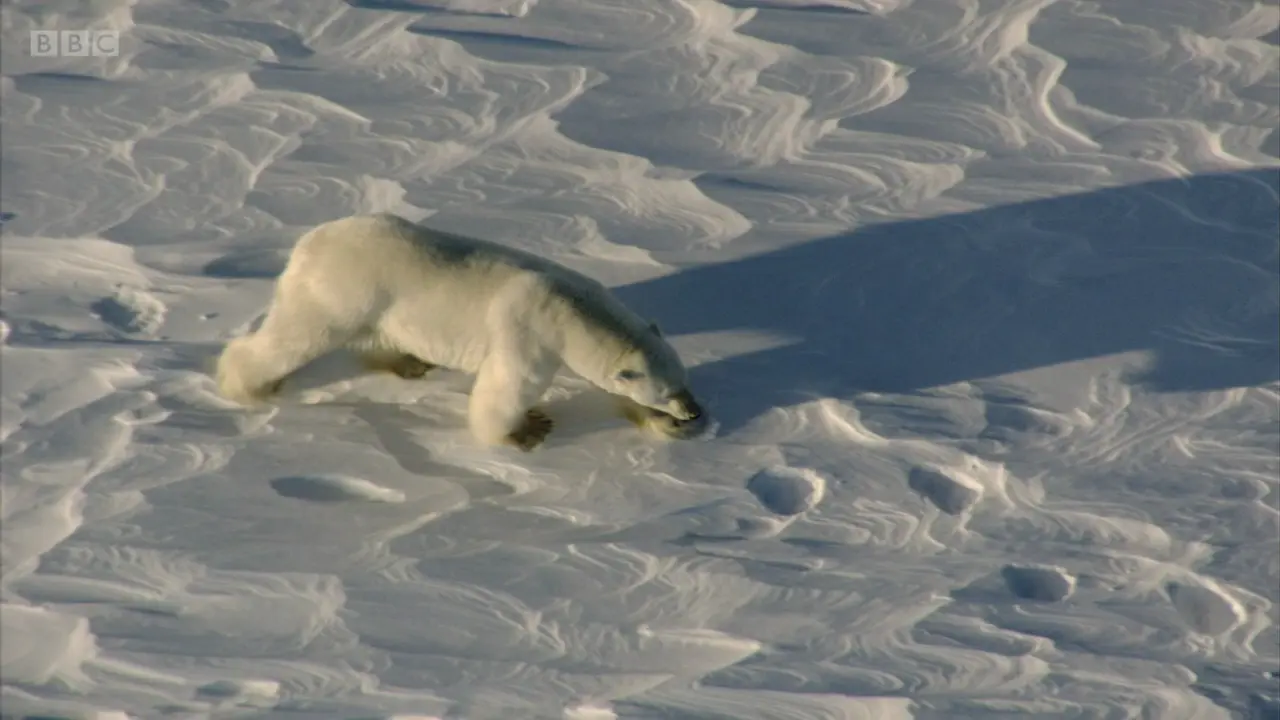
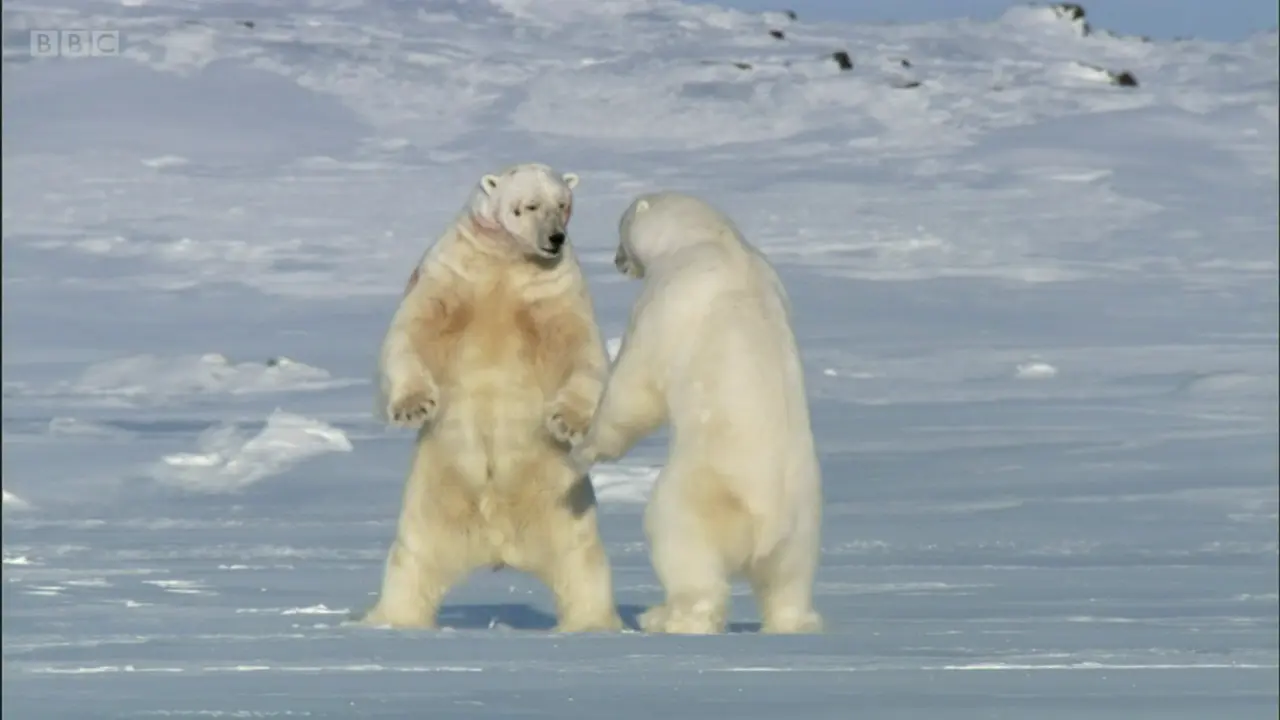
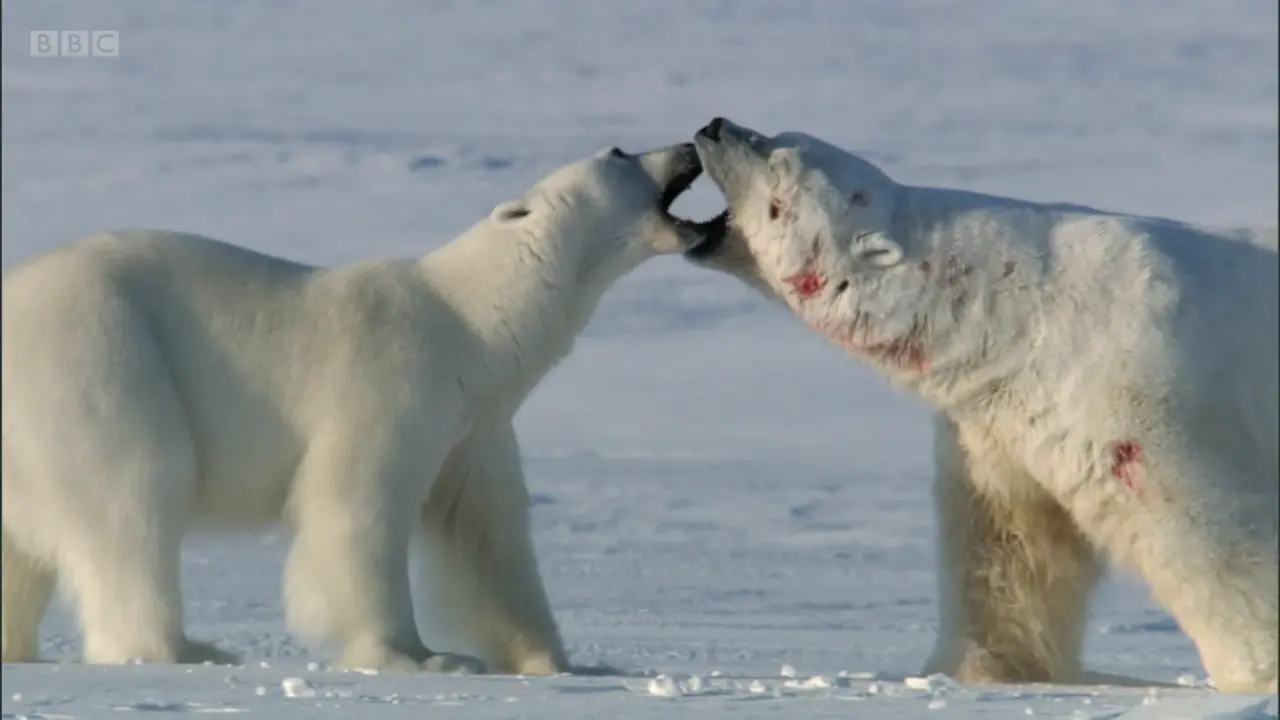
Svalbard, Norway
Male polar bears search the vast frozen ocean in the High Arctic for a mate. One bear, having locked onto a female's scent, follows her tracks closely. He even makes sure to step into the spaces of compacted snow left by her footprints to speed up his pursuit. When he finds her, she is initially wary. Encounters like these can be dangerous, particularly for the smaller female, but both animals are receptive to mating. For the next two weeks, the male will follow the female and continue to mate with her but to do so he must fend off many challenges from other rival males in the area. While some fights are settled without injury, many turn violent and bloody. These are the lengths this male goes to in order to ensure only his genes are passed on.
I initially thought this was filmed in Canada due to some of the "globe" shots that precede the sequence as the narration mentions the "High Arctic", but Executive Producer Alastair Fothergill's piece on the Daily Mail Online [1] explains how this story was shot in Svalbard, as with essentially all other sequences of polar bears in the series: "To capture these very private moments, we set up a base in Svalbard"
[Link 1]
[Link 1]
2
Short-tailed shearwater
Puffinus tenuirostris
LC
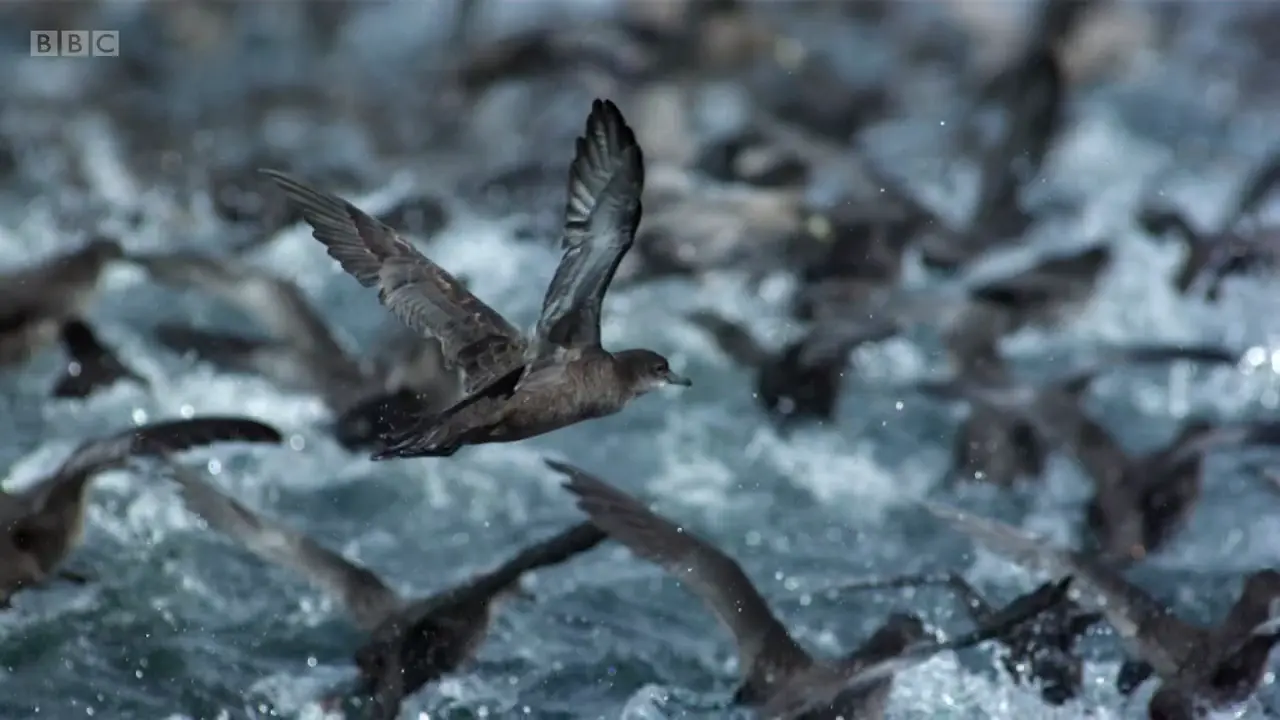
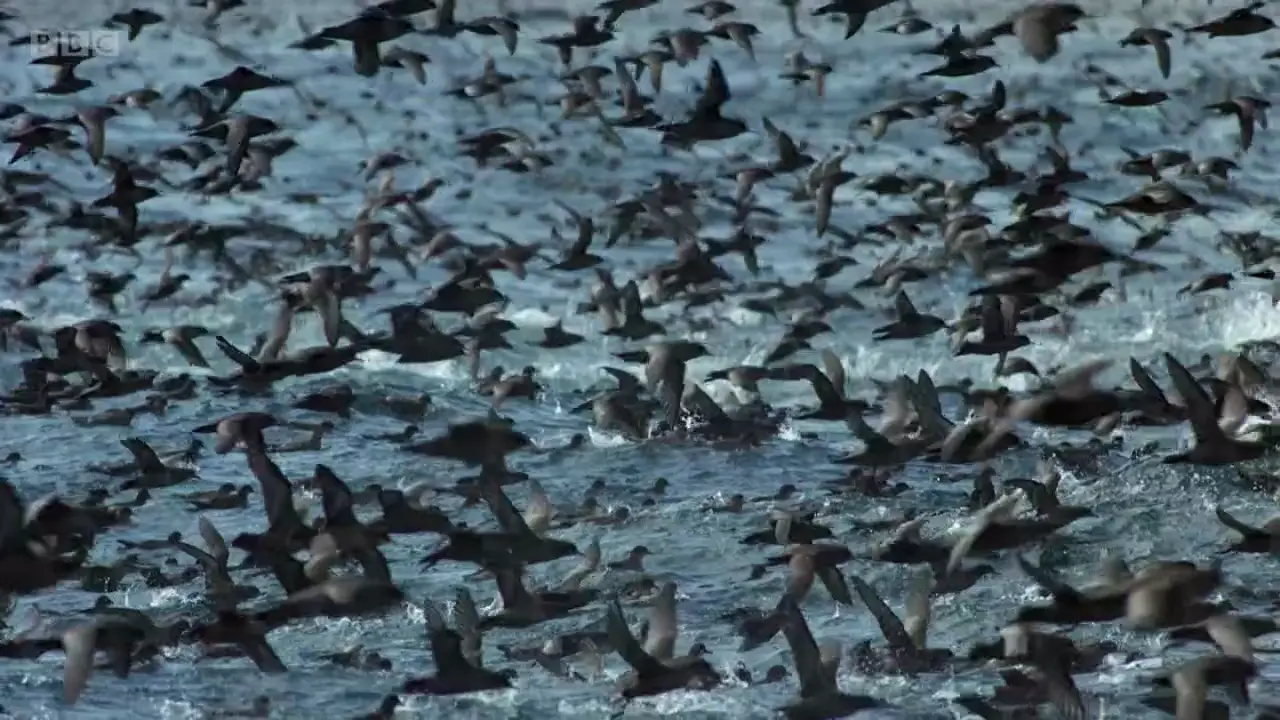
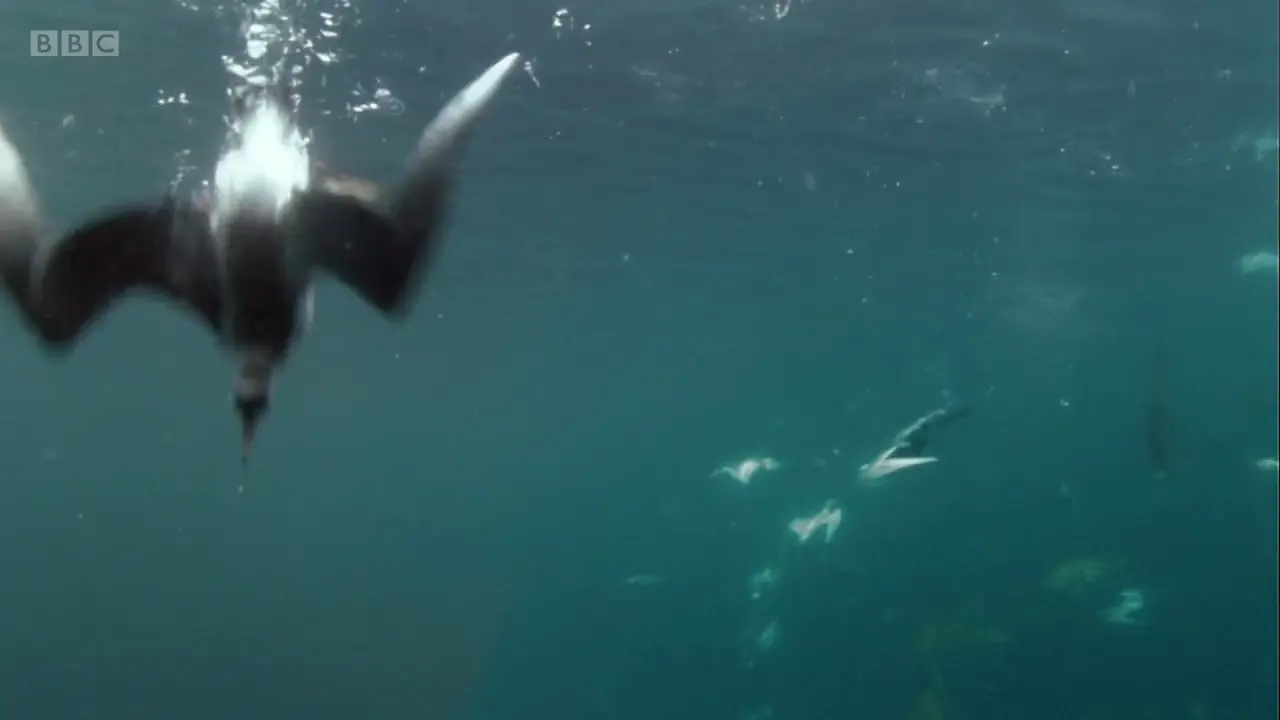
Akutan Island, Alaska, USA
Each spring in the Arctic Ocean, 18 million short-tailed shearwaters travel 10,000 miles from Australia to take advantage of the abundance of krill and herring newly exposed by the melting of a vast stretch of sea ice. The birds dive alongside humpback whales to grab prey in the water.
This sequence was filmed on Akutan Island in the Aleutians as detailed by cameraman
[Link 1]
[Link 1]
2
Humpback whale
Megaptera novaeangliae
LC
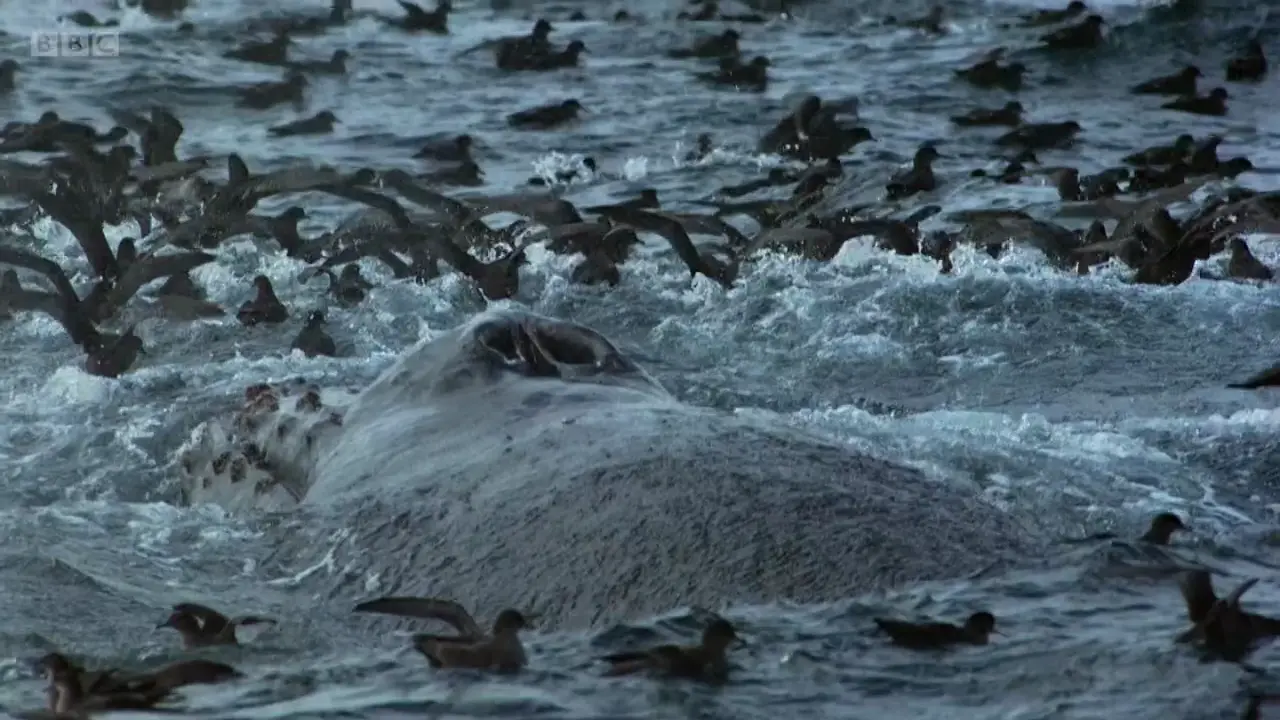
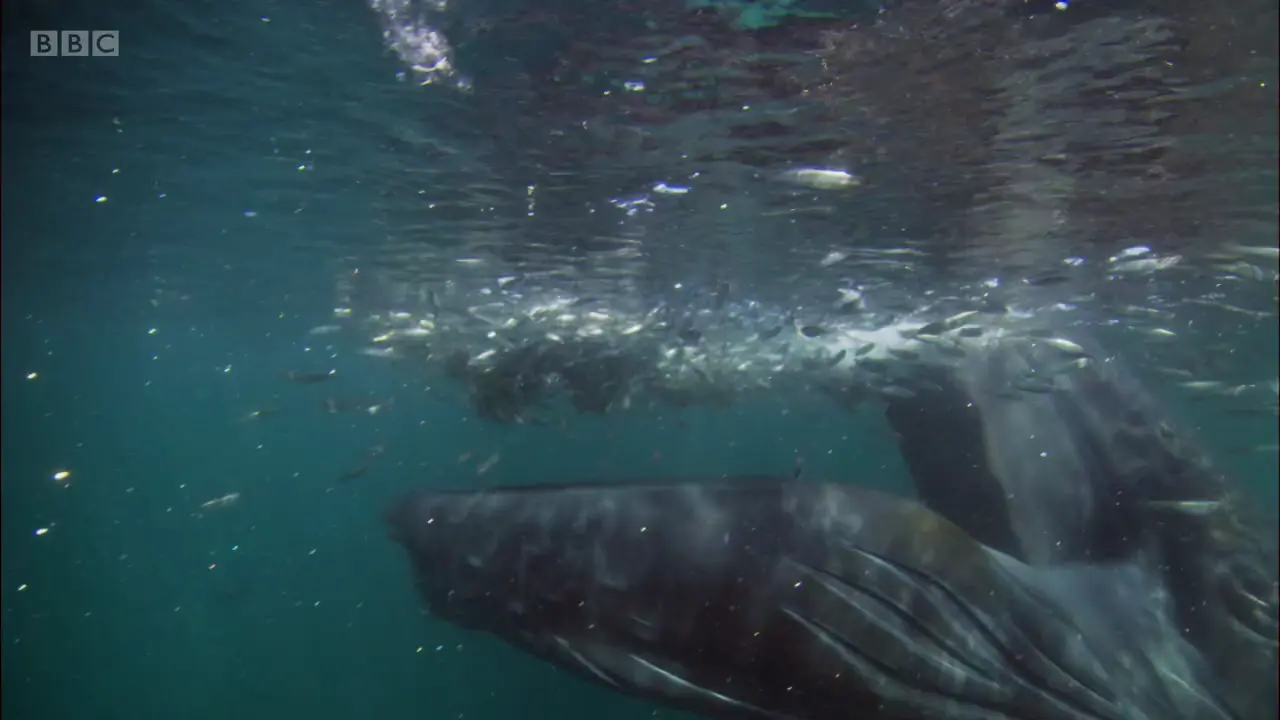
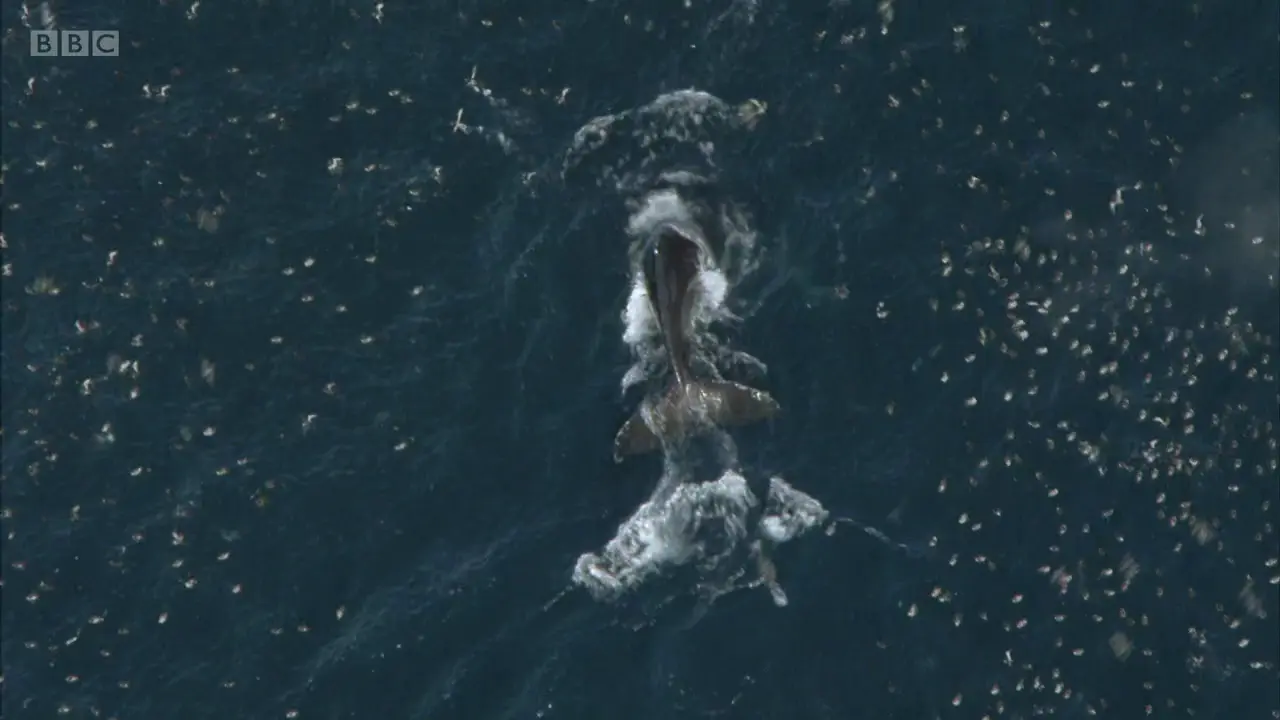
Akutan Island, Alaska, USA
Humpback whales travel from the Equator up to the Arctic Ocean each spring, as the melting sea ice exposes the waters below, rich in krill and herring. By raising their wide tails above water as they dive, the whales gain a strong downward momentum which propels their descent to hunt. They are joined by millions of seabirds, such as short-tailed shearwaters, as they make the most of this seasonal bounty.
3
Barren-ground caribou
Rangifer tarandus groenlandicus
VU
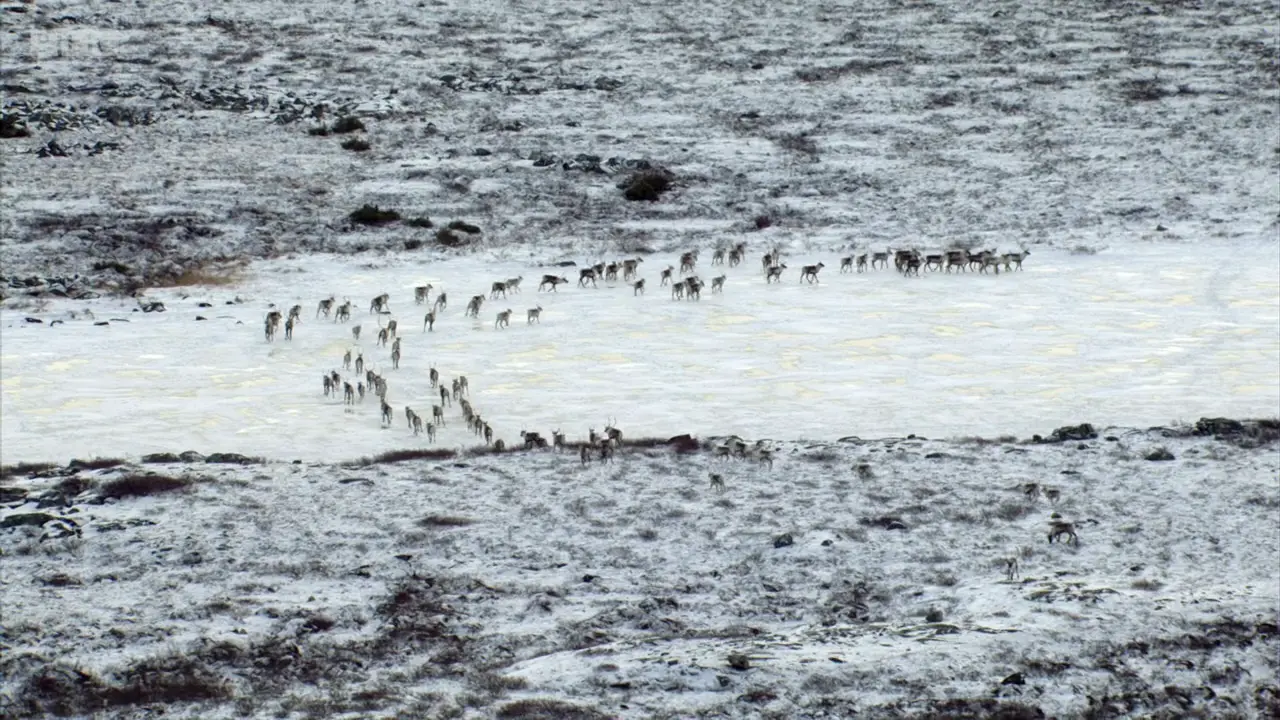
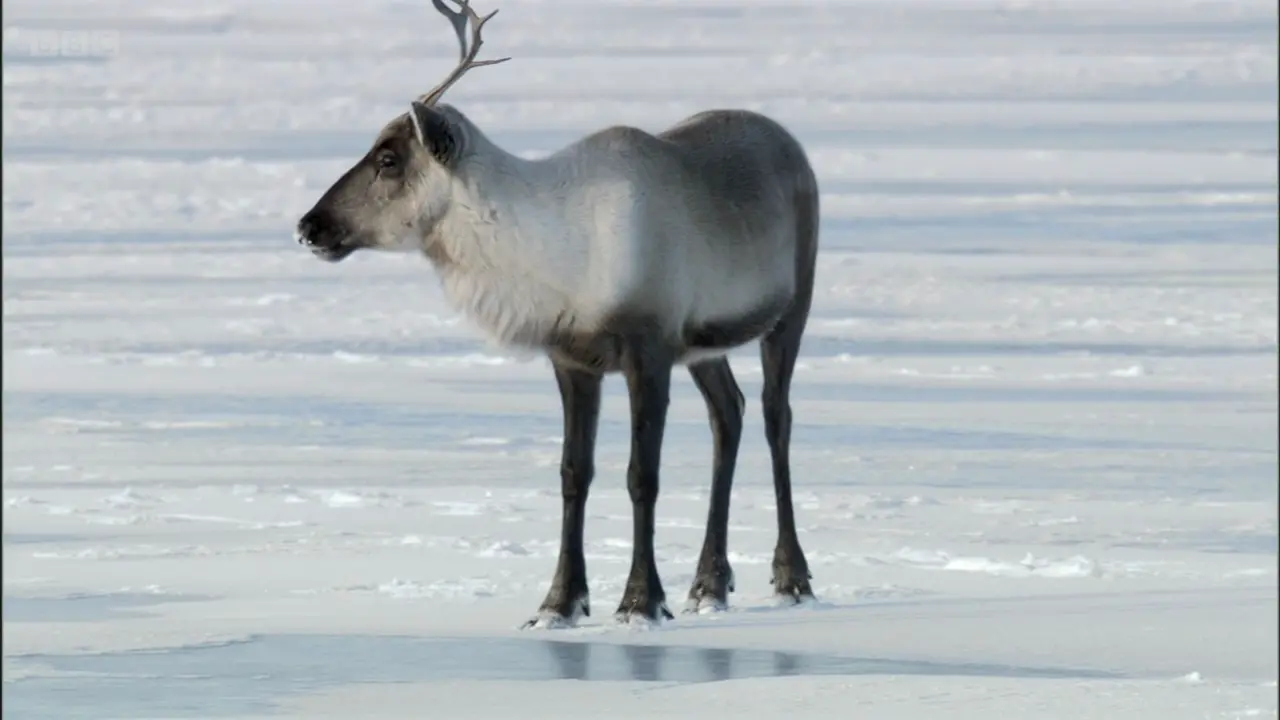
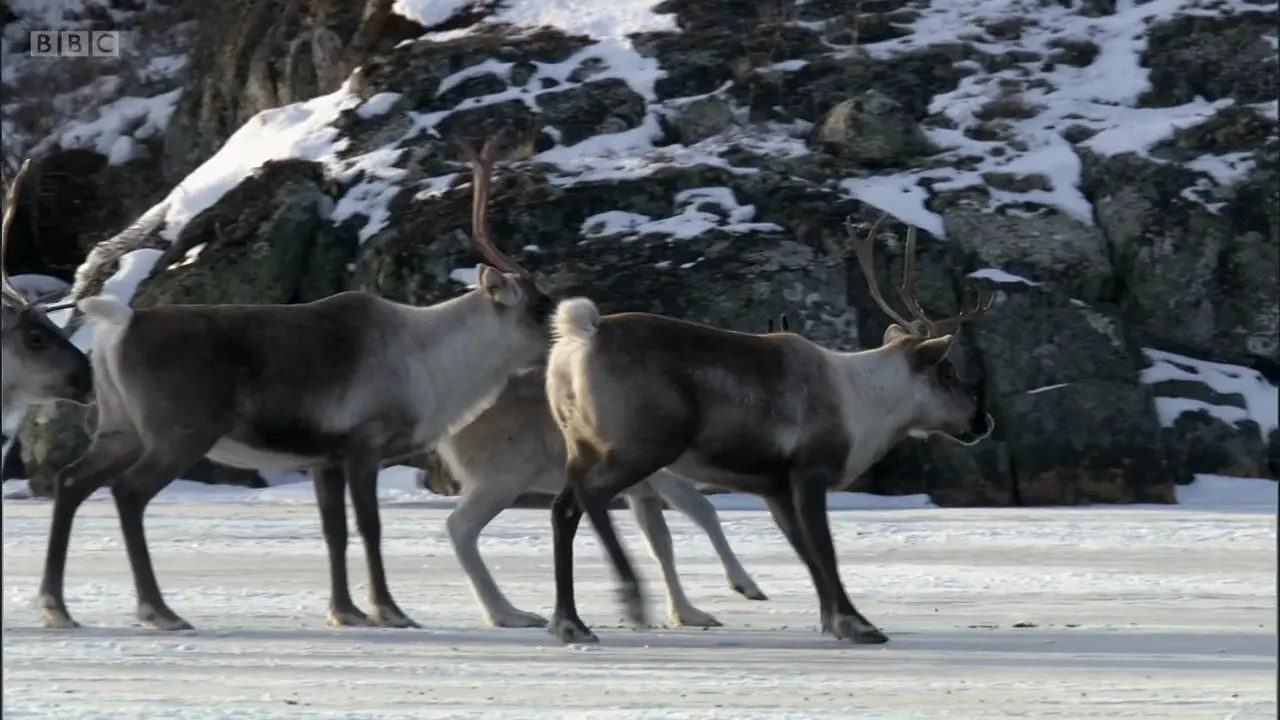
Barren Lands, Canada
Caribou must time their migration north to the tundra below the Arctic Circle to the fresh grazing that the spring melt brings. Too early, and they will have to contend with deadly winter storms; too late, and they may not have enough time to build up their reserves on this bounty before the next winter.
These same shots appear later in the series as part of the extended sequence filmed in the Barren Lands
4
Northwestern wolf
Canis lupus occidentalis
LC
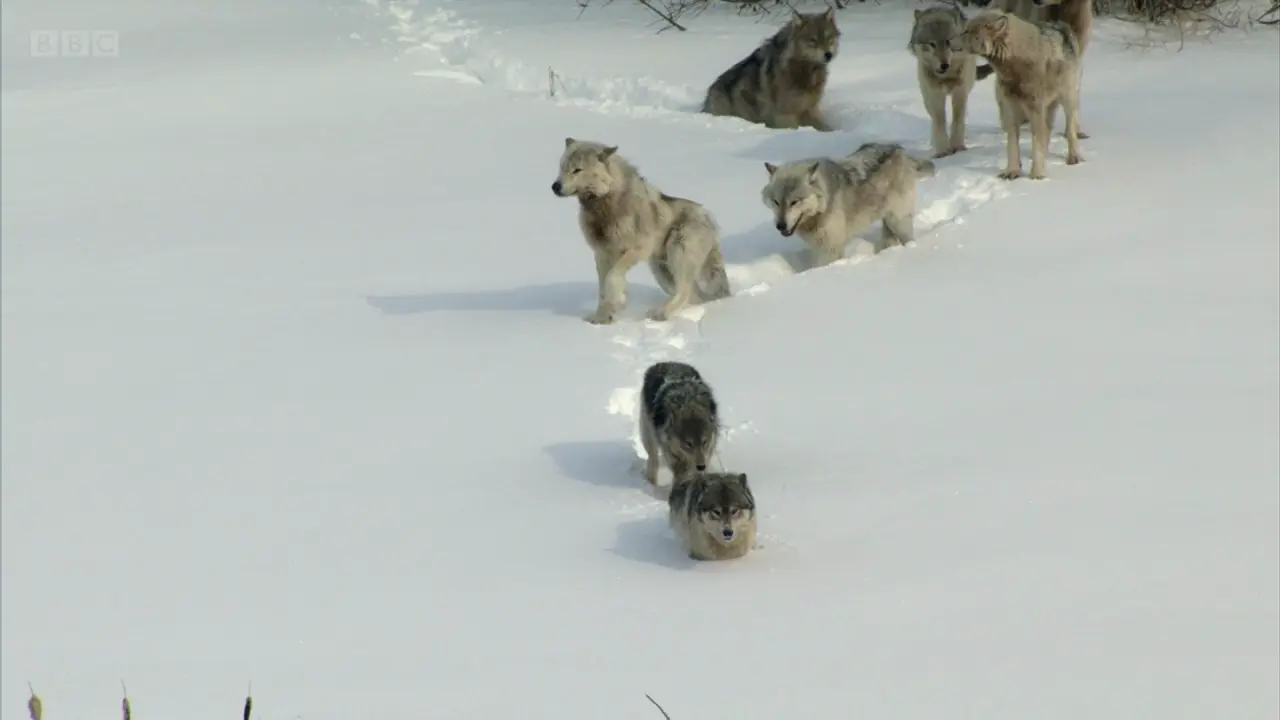
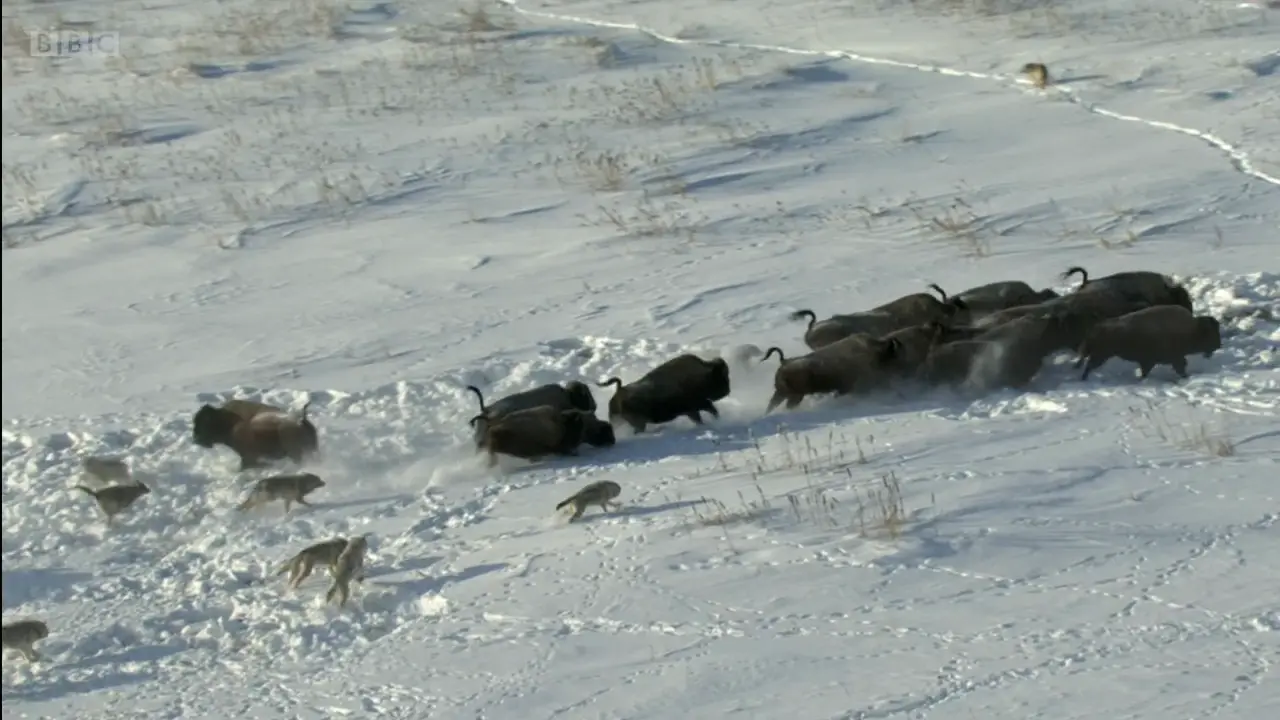
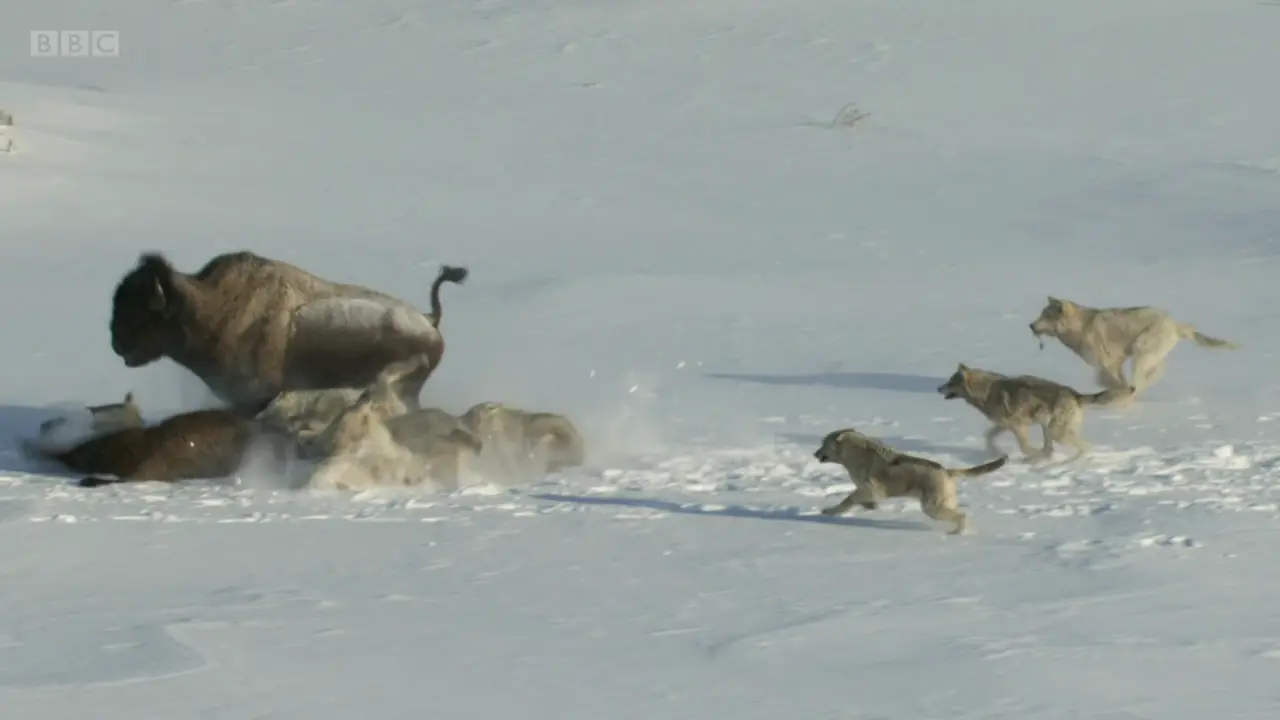
Wood Buffalo National Park, Alberta, Canada
The grey wolves in northern Canada are among the largest in the world; and they need to be to tackle large prey. One pack with 25 members is on the hunt for bison. While under cover of the forests, the predators have an advantage, but out in the open, the element of surprise is lost and the bison are able to herd together more tightly making it harder for the wolves to separate a target. They concentrate their approach on the rear of the herd and manage to trigger a stampede. Giving chase, the pack is able to bring down a yearling bison after it suffers the misfortune of being knocked down by another fully-grown bison.
Location is based on Chadden Hunter's photo on Nature Picture Library [1]
[Link 1]
[Link 1]
4
Wood bison
Bison bison athabascae
NT
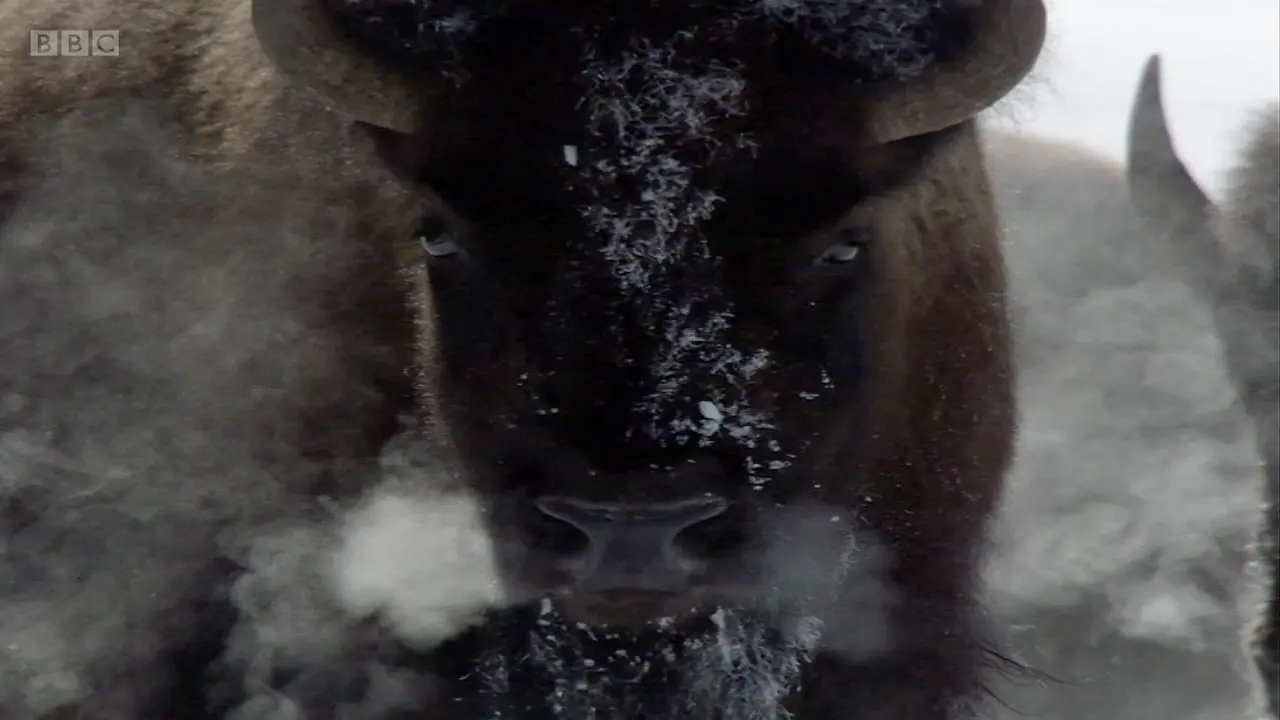
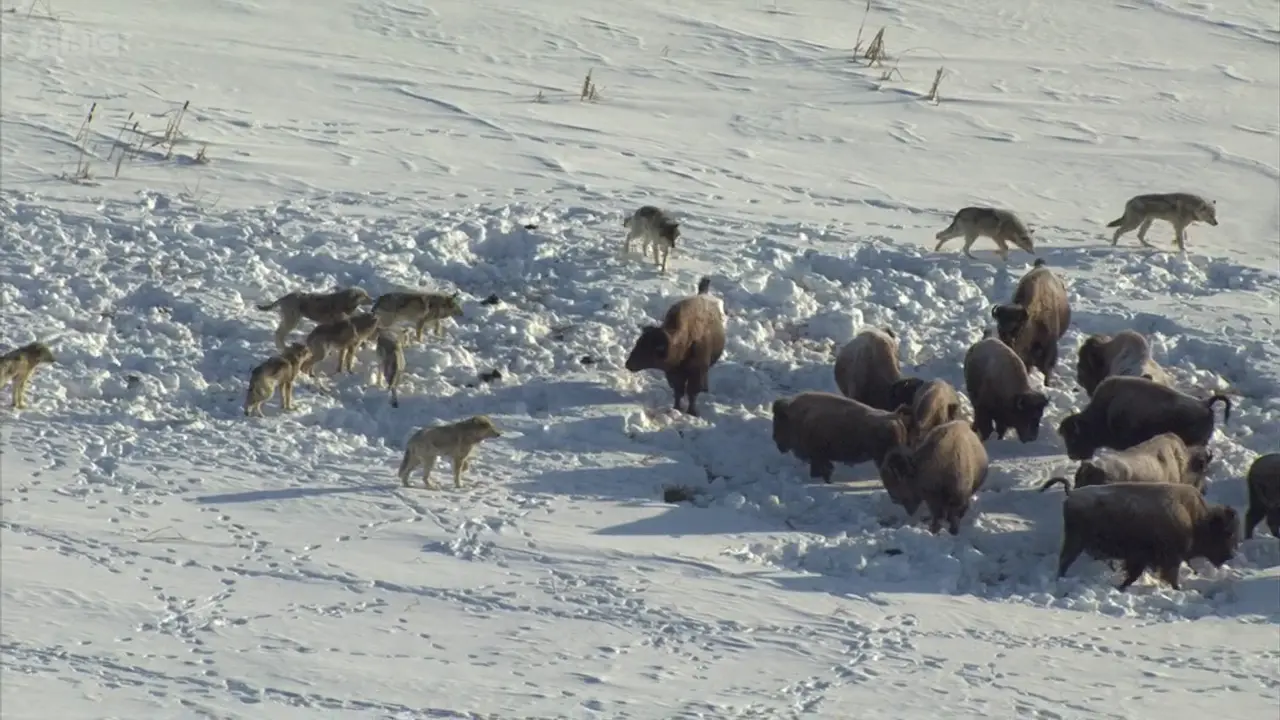
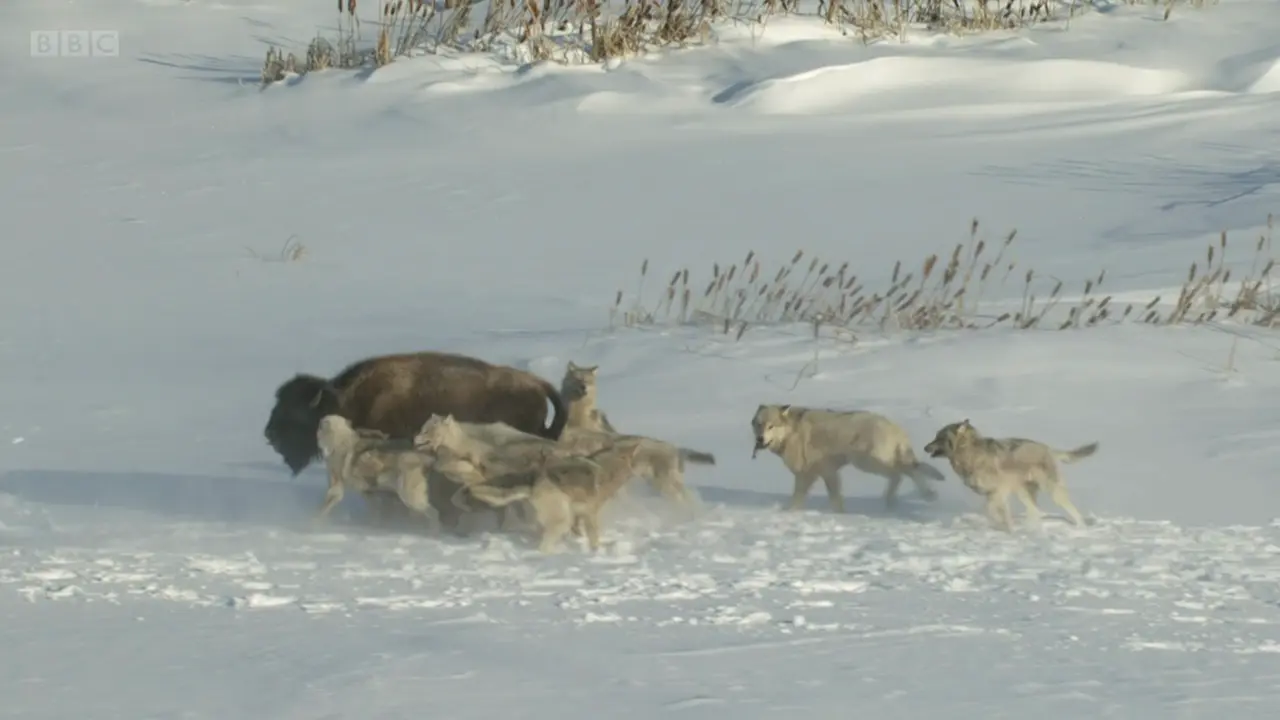
Wood Buffalo National Park, Alberta, Canada
American bison in northern Canada are hunted by packs of grey wolves. One herd, encircled by a pack on an open plain, form a defensive circle around the young. In this tightly packed formation, the wolves cannot easily separate a target. But, as the predators persist, panic spreads through the ranks and the bison begin to stampede. One yearling bison is subdued by the pack and, despite its best efforts, is quickly brought down after being accidentally tackled by another fully-grown bison.
Location is based on Chadden Hunter's photo on Nature Picture Library [1]
[Link 1]
[Link 1]
5
Great grey owl
Strix nebulosa lapponica
LC
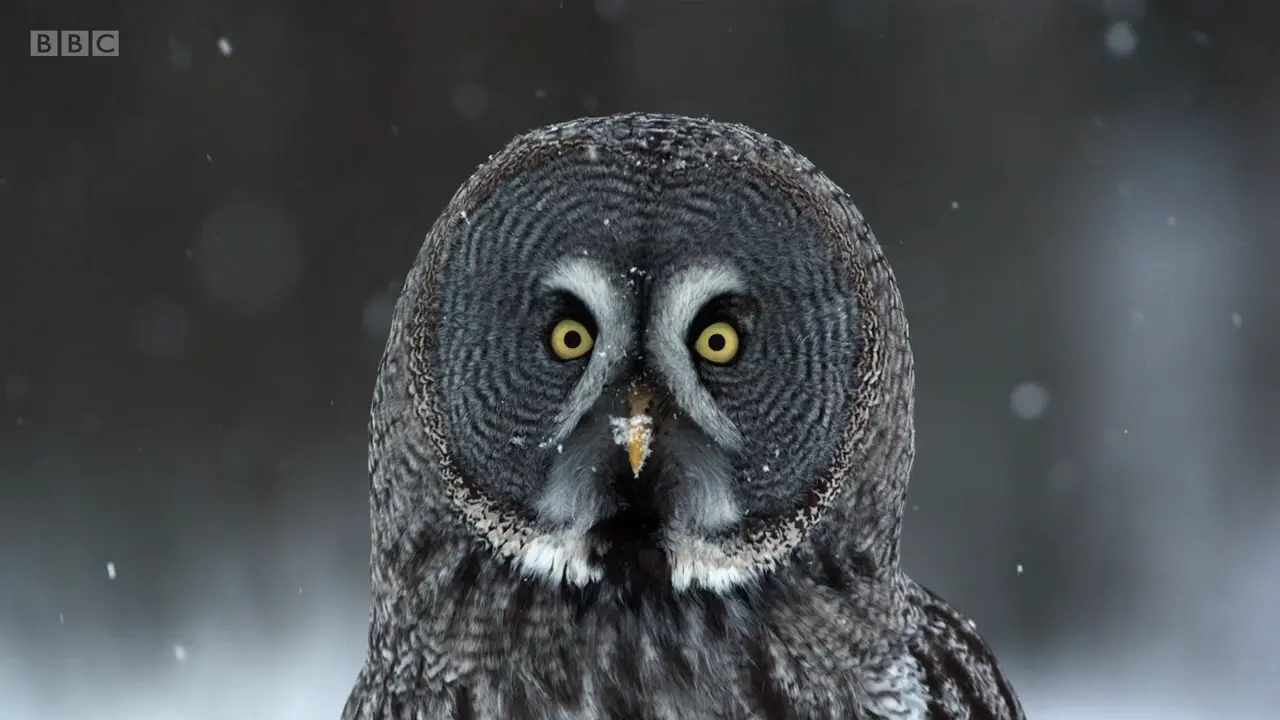
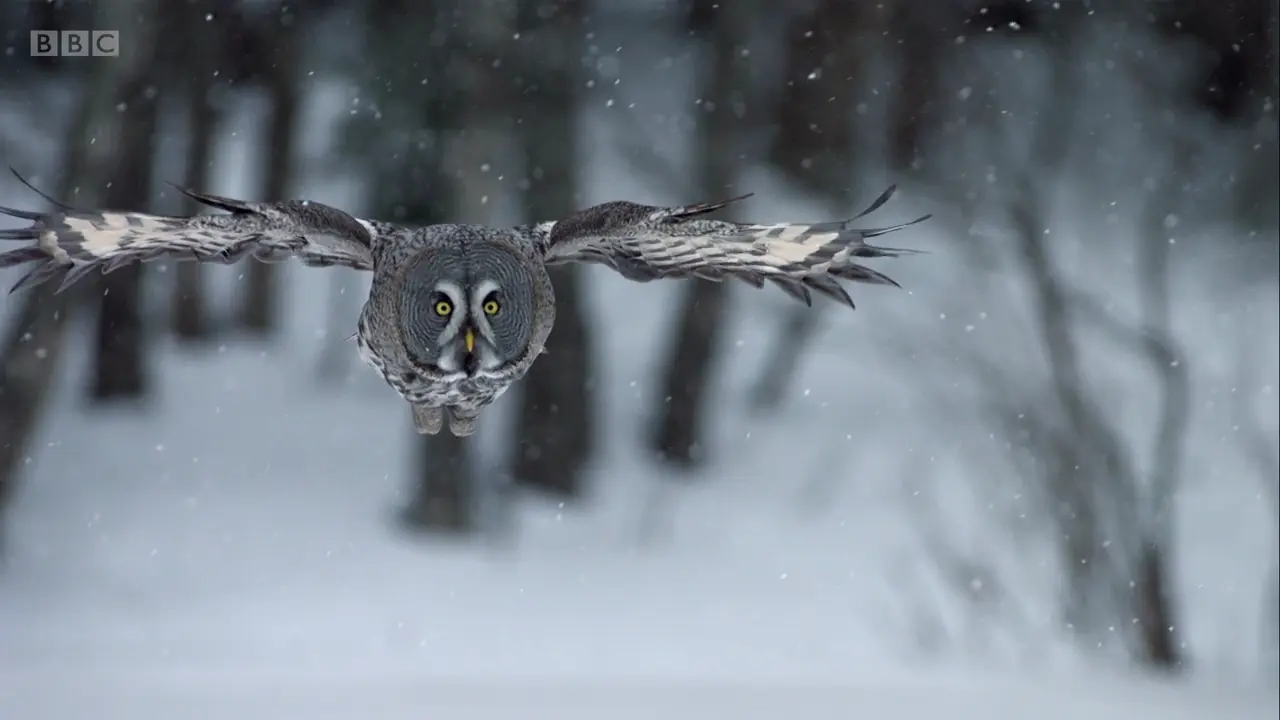
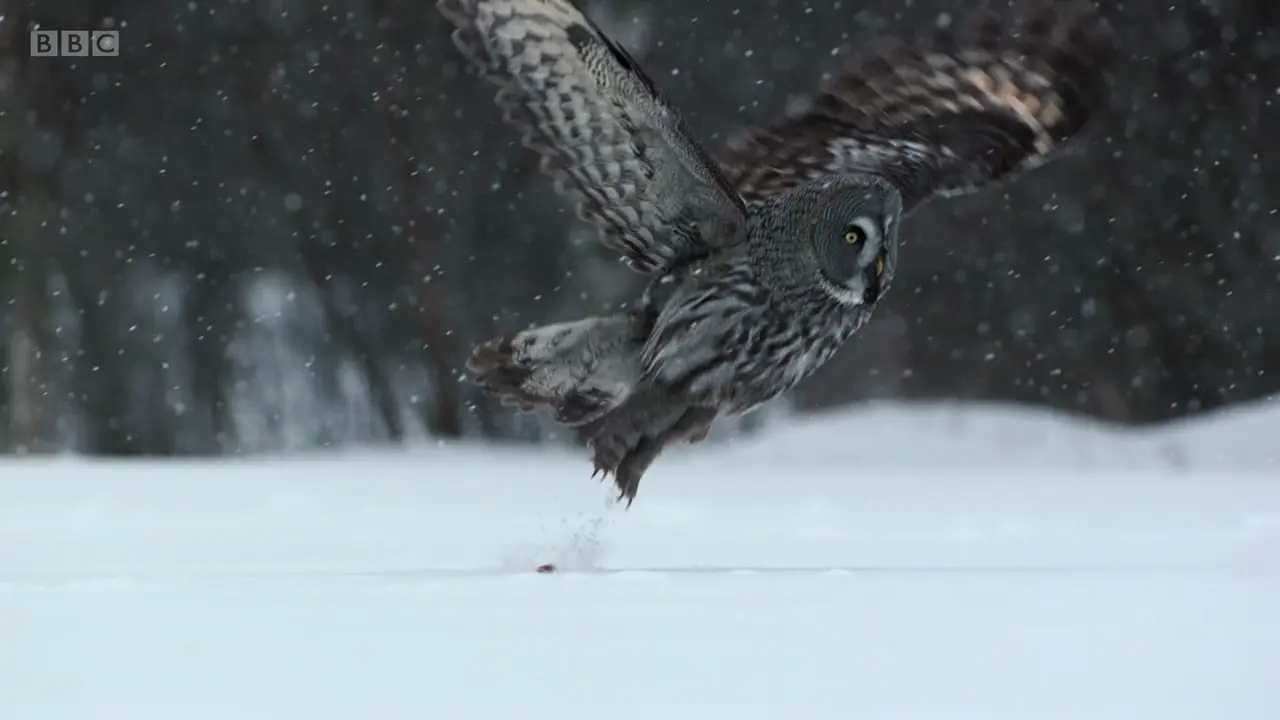
Tornio, Finland
Great grey owls appear in boreal forests in springtime. They fly low over snow-covered ground hunting for prey such as lemmings, which live beneath the snow year-round insulated from the cold above.
Filmed by Barrie Britton in Tornio, Finland, in March 2009 [1]. The same shots appear later in the series as part of the extended sequence.
[Link 1]
[Link 1]
6
Gentoo penguin
Pygoscelis papua
LC
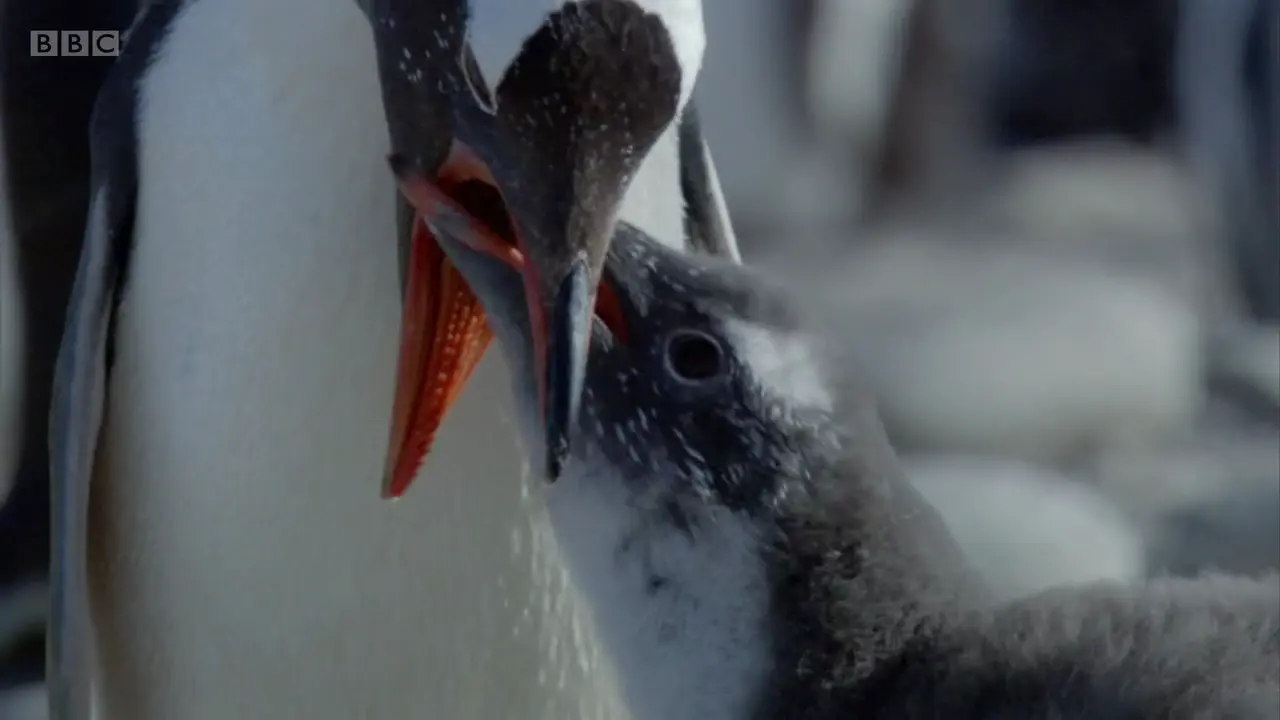
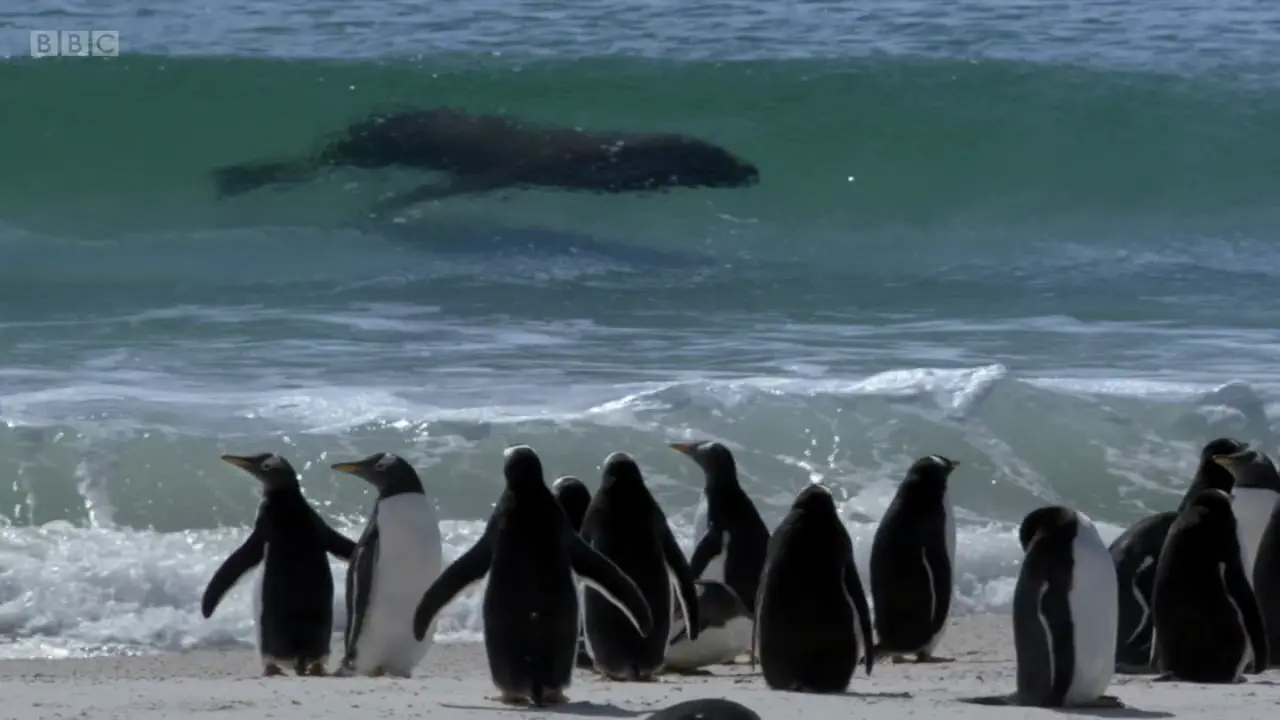
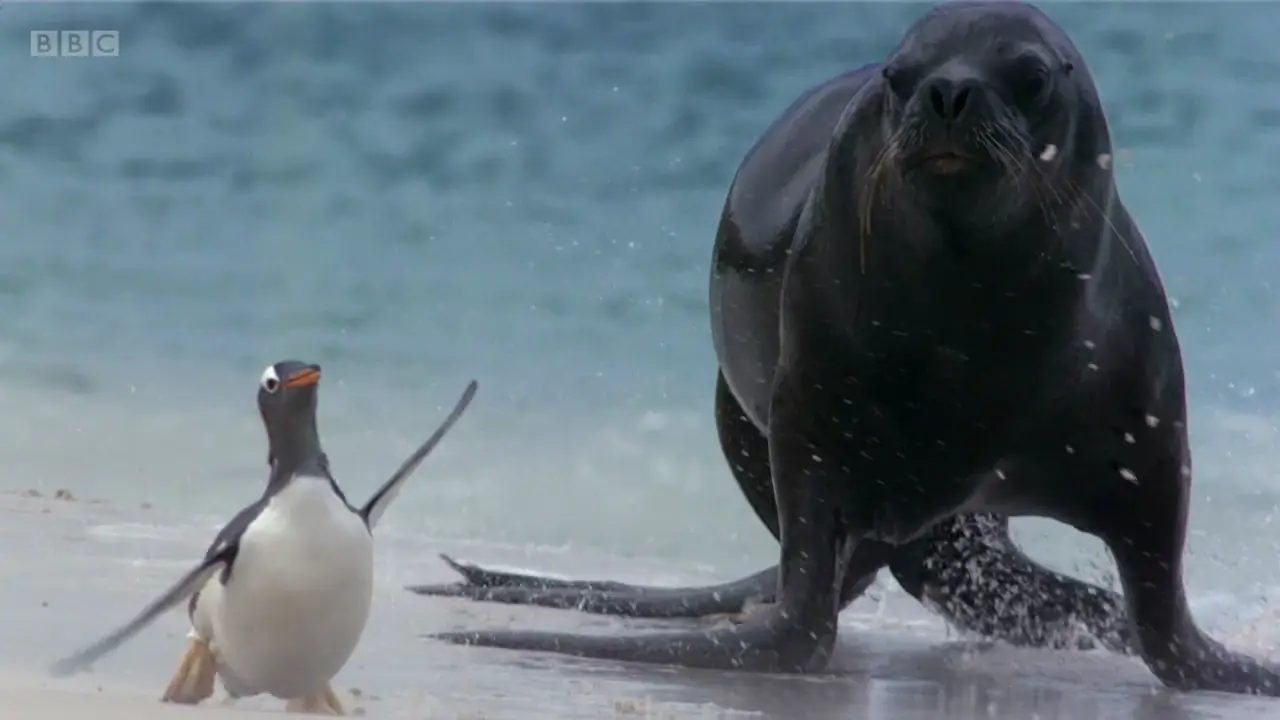
New Island, Falkland Islands
Each spring, gentoo penguins come to New Island in the Falklands to breed and rear their young. To provide food for their hungry chicks, both parents must return to the sea to hunt. This brings them into the purview of opportunitistic South American sea lions, which stake out the shallows. One sea lion Penguins are more agile in the water, sea lion chases one bird up the beach. On the sand, the penguins are more clumsy and vulnerable but, luckily for one penguin, so is the sea lion. The penguin is able to slip out of the jaws of the sea lion and escape back into the water.
Location is from cameraman John Aitchinson's book
6
South American sea lion
Otaria flavescens
LC


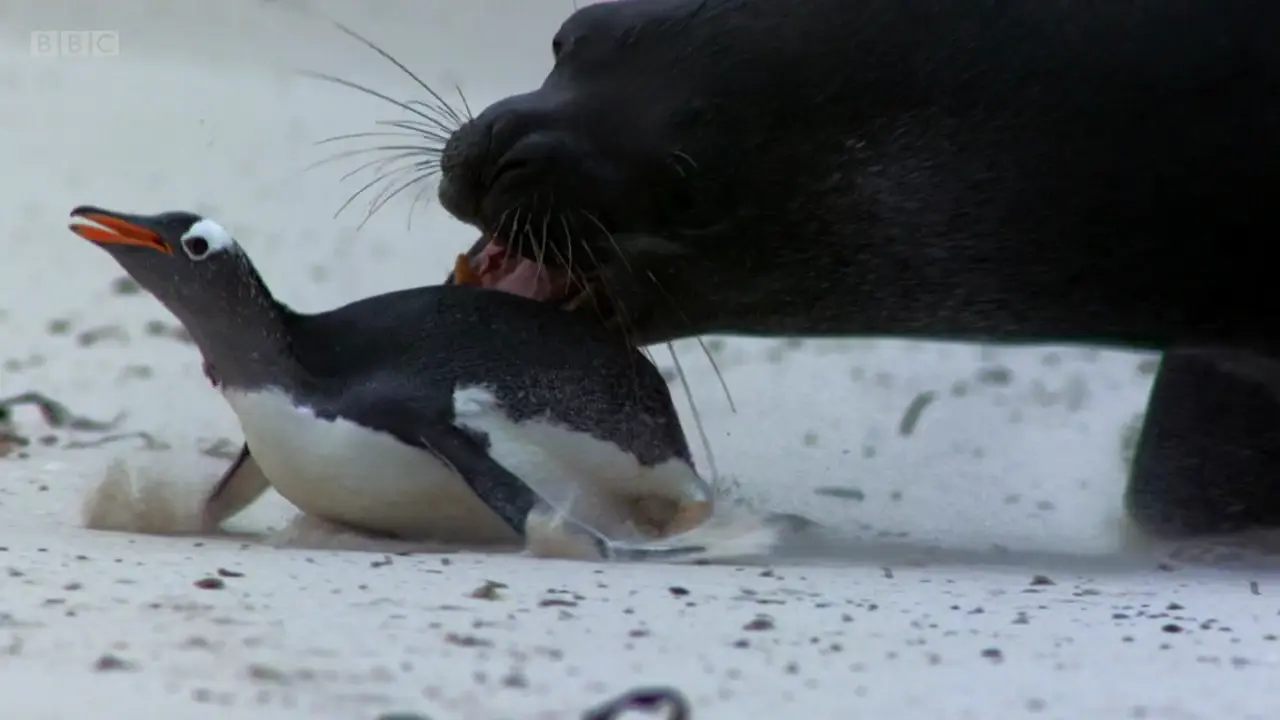
New Island, Falkland Islands
The diet of South American sea lions on New Island in the Falklands usually consists of fish, but they are opportunist. So, when gentoo penguins come here each spring to breed, the sea lions take out the shallows to hunt birds going and returning from sea to gather food for their chicks. For one sea lion, the penguins prove to be too agile in the water. Even when he chases one bird up on the beach, both he and his prey are handicapped on the sand, and the penguin is able to slip out of his jaws.
Location is from cameraman John Aitchinson's book
7
Antarctic minke whale
Balaenoptera bonaerensis
NT
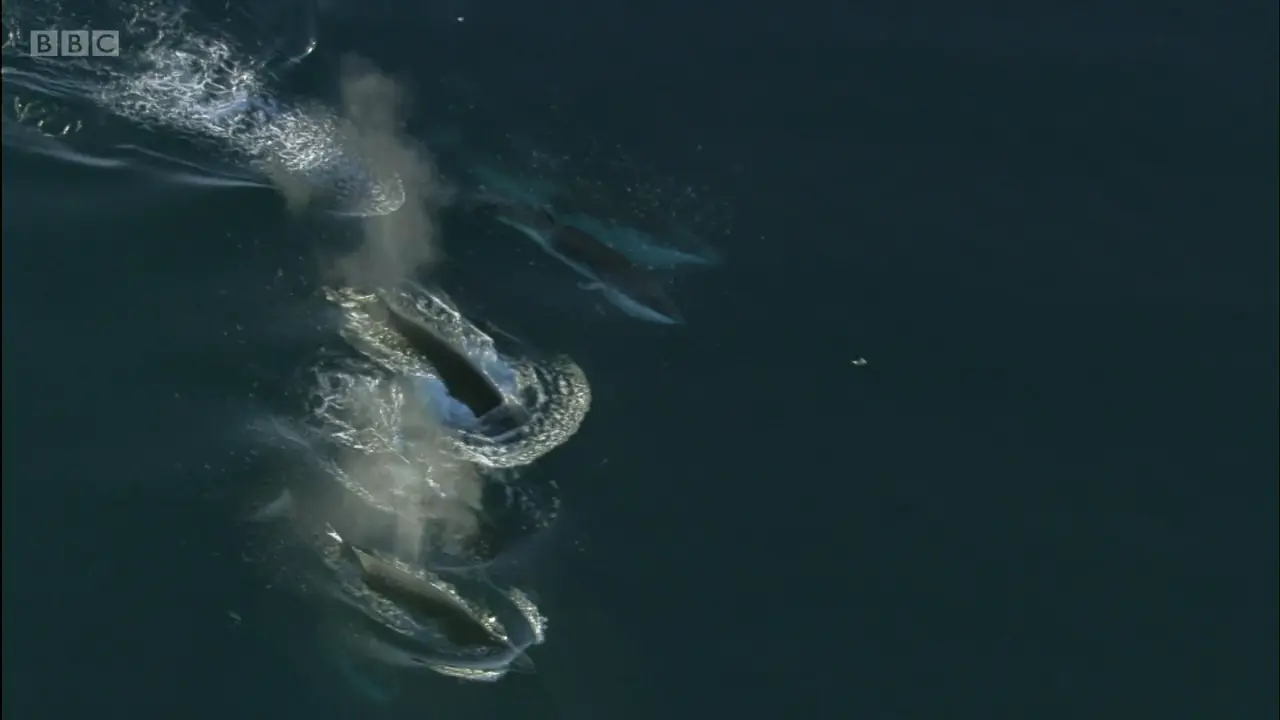
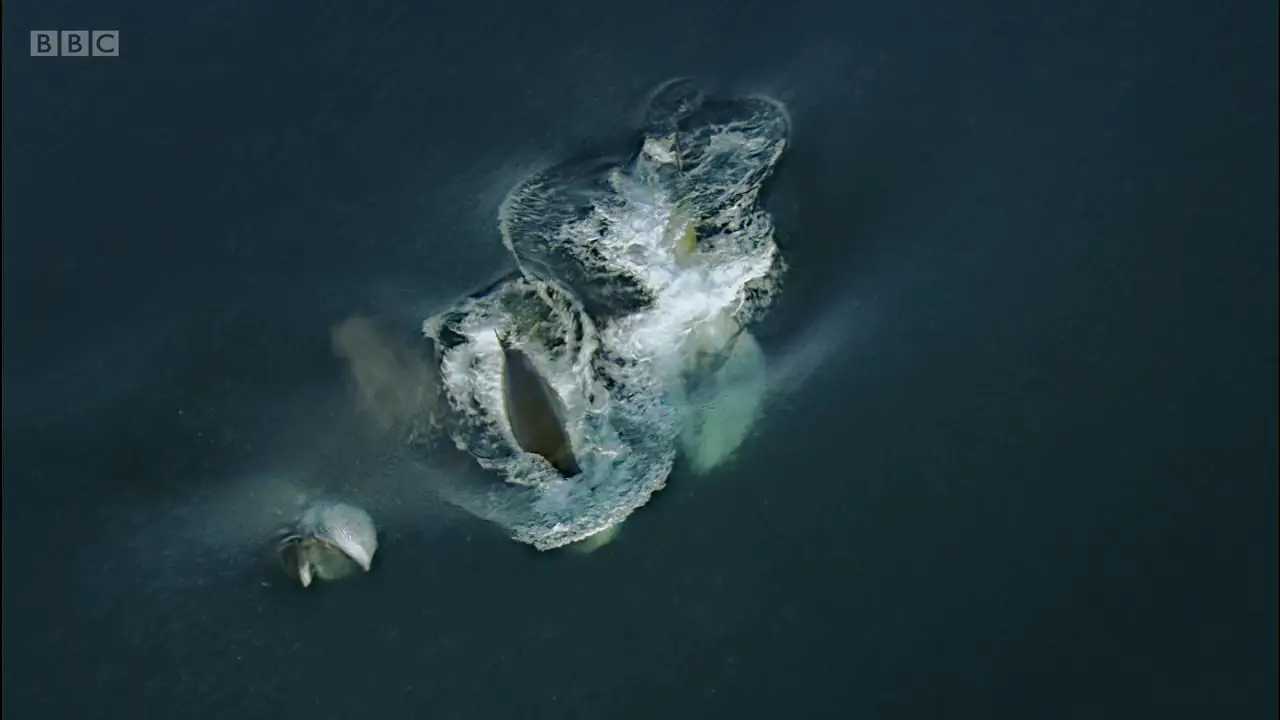
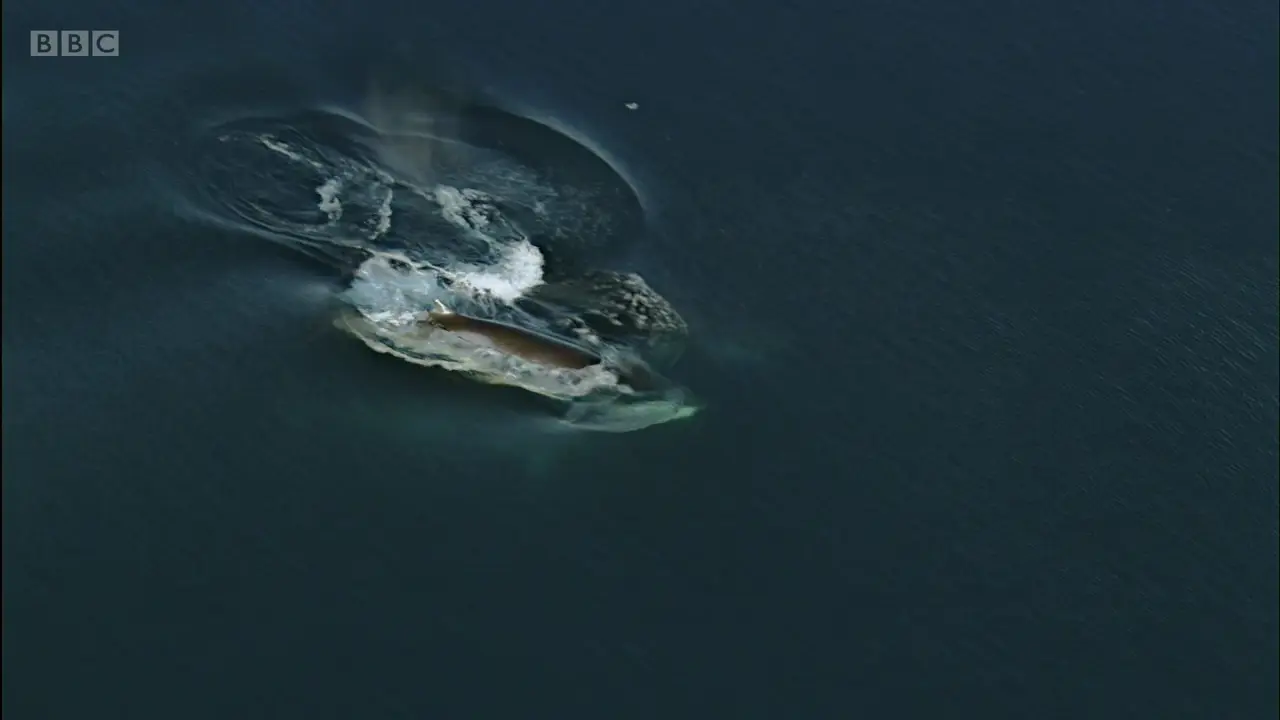
Antarctica
Minke whales are among the thousands of whales that migrate to the Southern Ocean every summer to feed.
I judge this to be an Antarctic minke whale rather than a drawf form of the Common minke whale due to no dark throat patch as seen at 32:42 and 32:49 ("Unlike the dwarf minke, the dark gray between the eye and flipper does not extend unto the ventral grooves of the throat to form a dark throat patch; there is instead an irregularly shaped line running from about the level of the eye to the anterior insertion of the flipper, merging with the light gray of the shoulder patch."). Also, in its second appearance in the episode, it is mentioned in the narration as further south than the site of the Killer whale attack on the seals (Marguerite Bay). Dwarf forms of the Common minke whale have only been observed as far south as the Gerlache Strait.
7
Humpback whale
Megaptera novaeangliae
LC
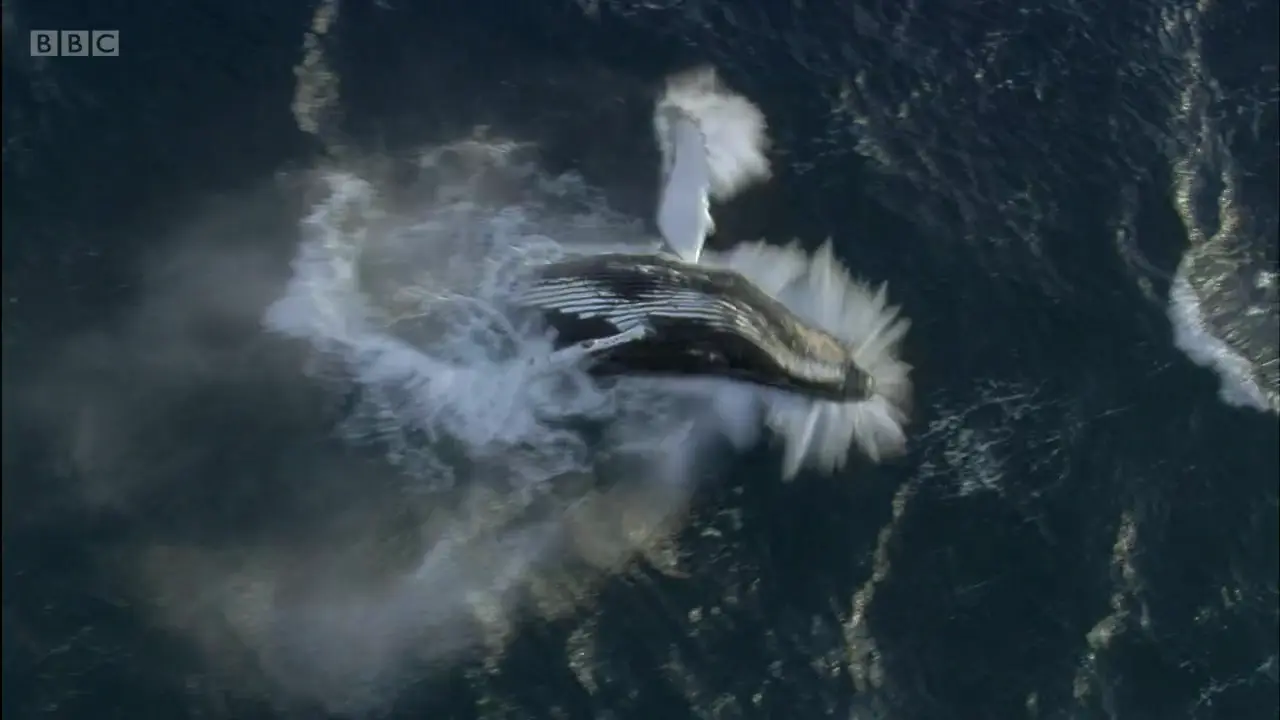
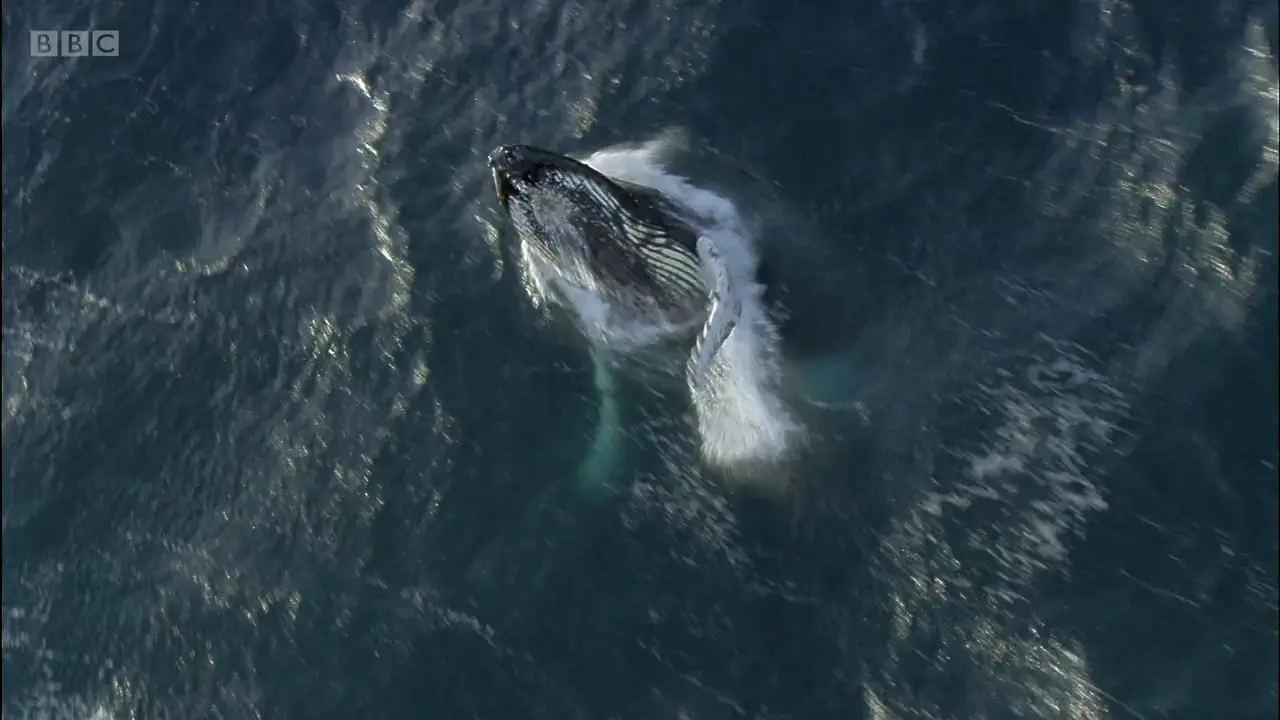
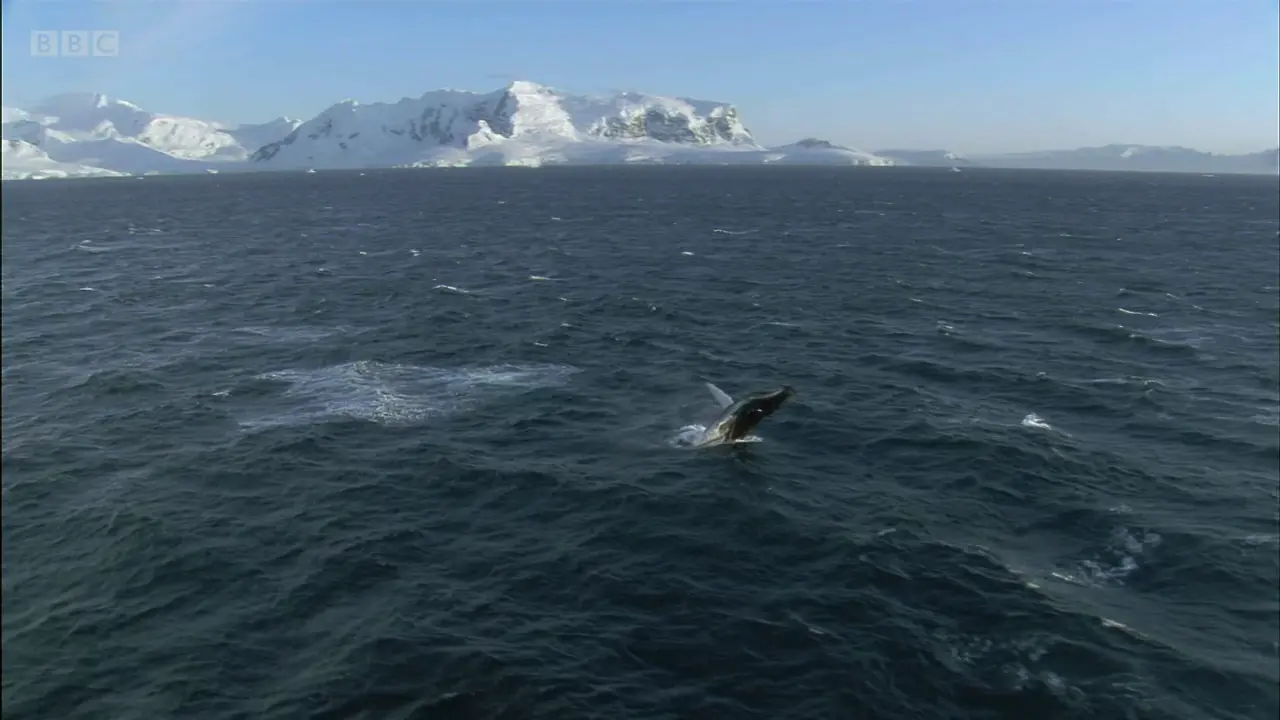
Antarctica
Humpback whales travel 4,000 miles from the equator down to Antarctic waters to feed.
8
Crabeater seal
Lobodon carcinophaga
LC
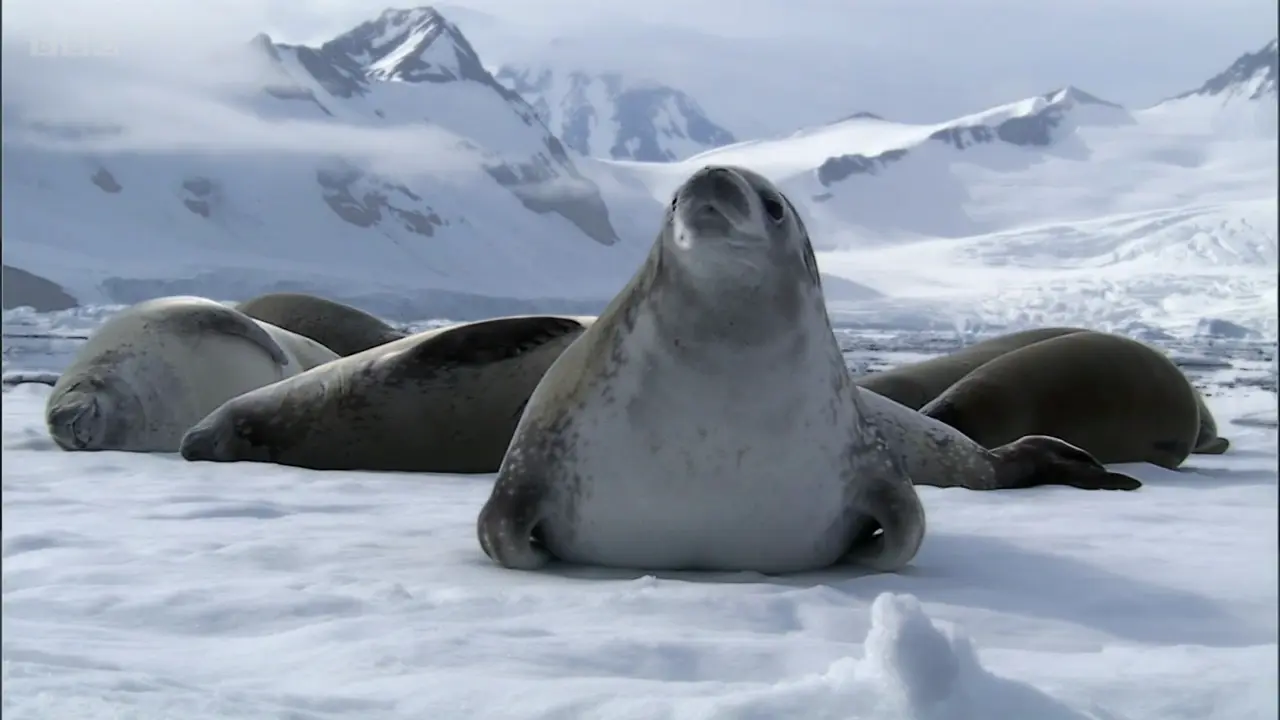
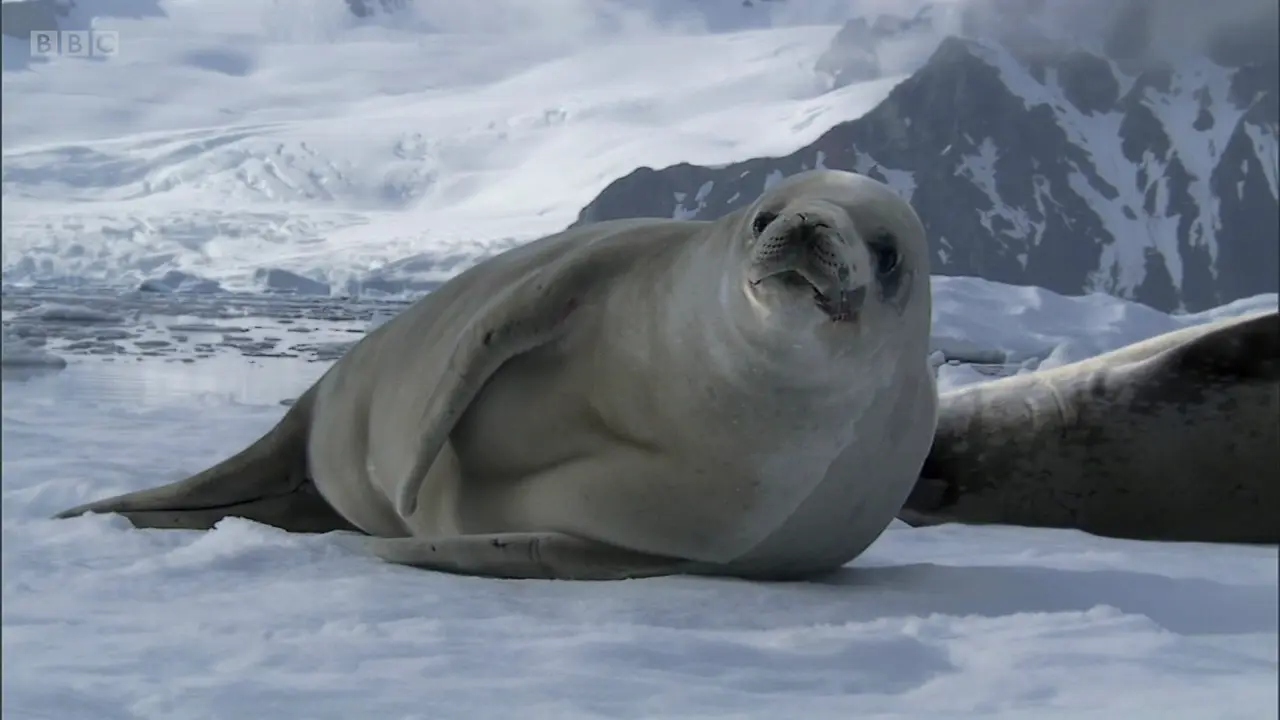
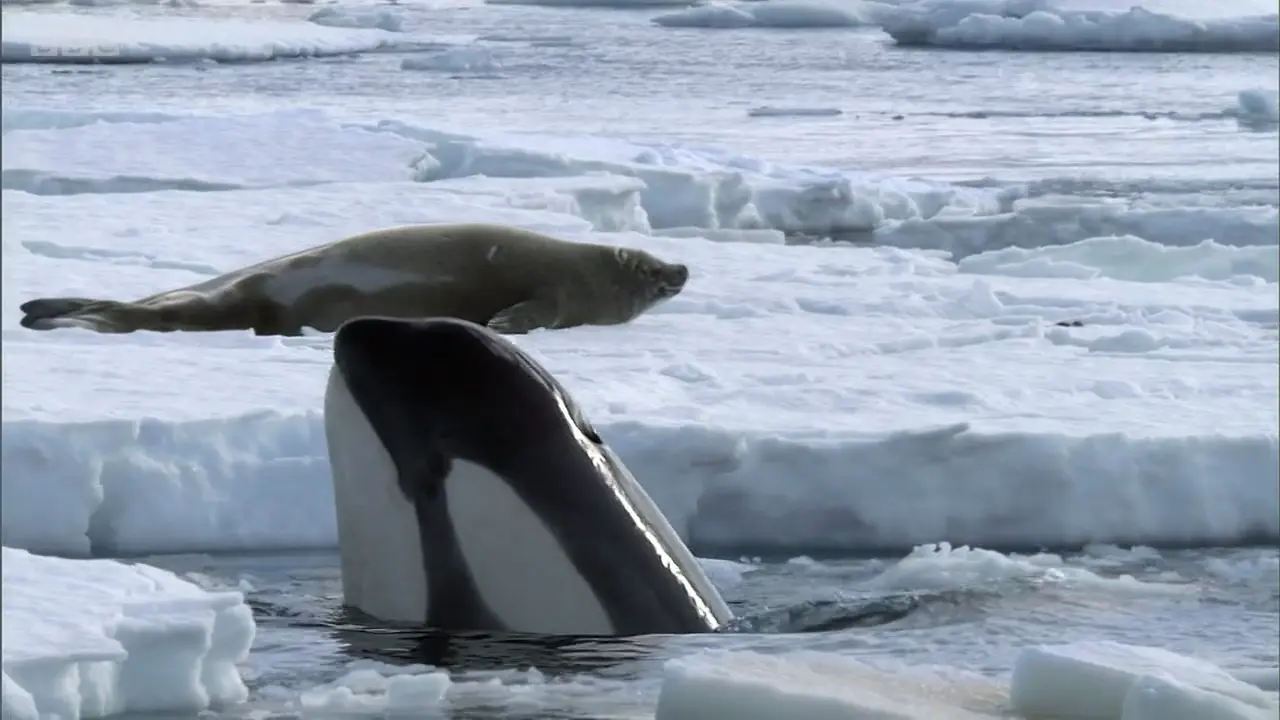
Marguerite Bay, Antarctica
The summer melt brings crabeater seals that have endured the Antarctic winter out onto the remaining ice floes to sunbathe. A pod of killer whales
in the area breaches the surface to get a look at one seal resting on the ice. The whales decide against pursuing the crabeater, opting instead to search for less challenging prey.
in the area breaches the surface to get a look at one seal resting on the ice. The whales decide against pursuing the crabeater, opting instead to search for less challenging prey.
Location is based on cameraman Doug Allen's portfolio on Nature Picture Library [1]
[Link 1]
[Link 1]
8
Killer whale
Orcinus orca
DD

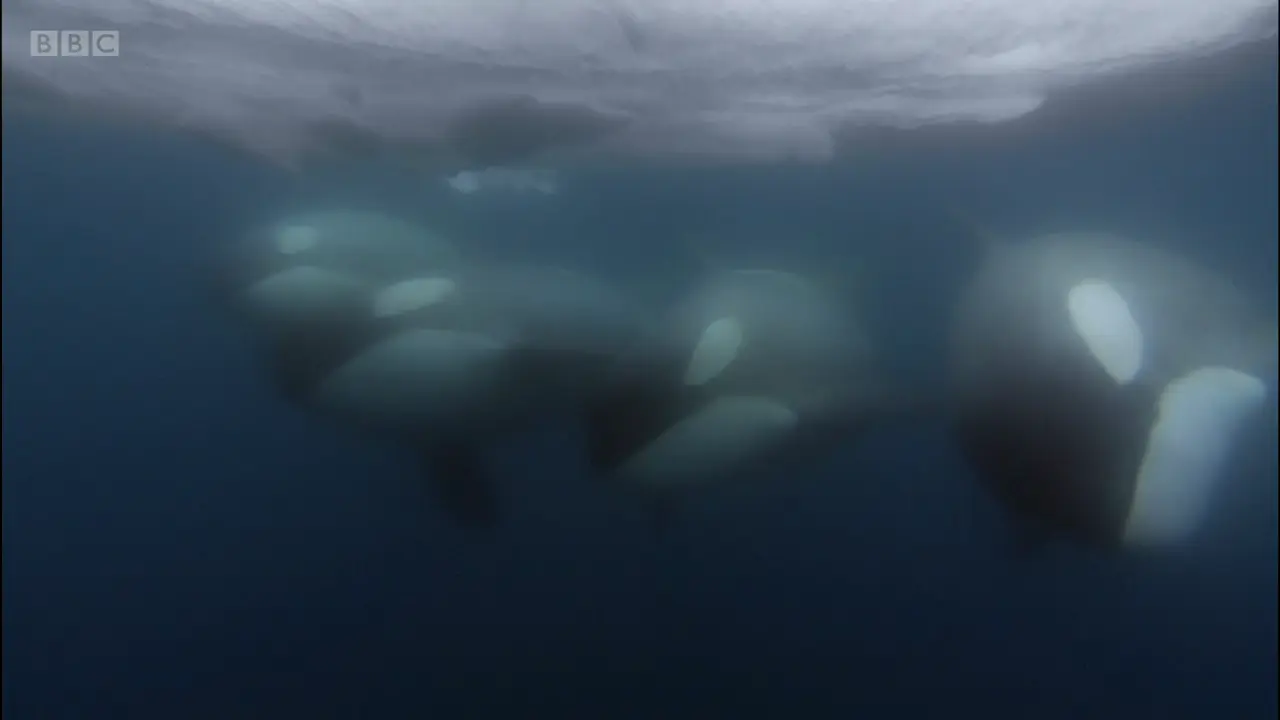
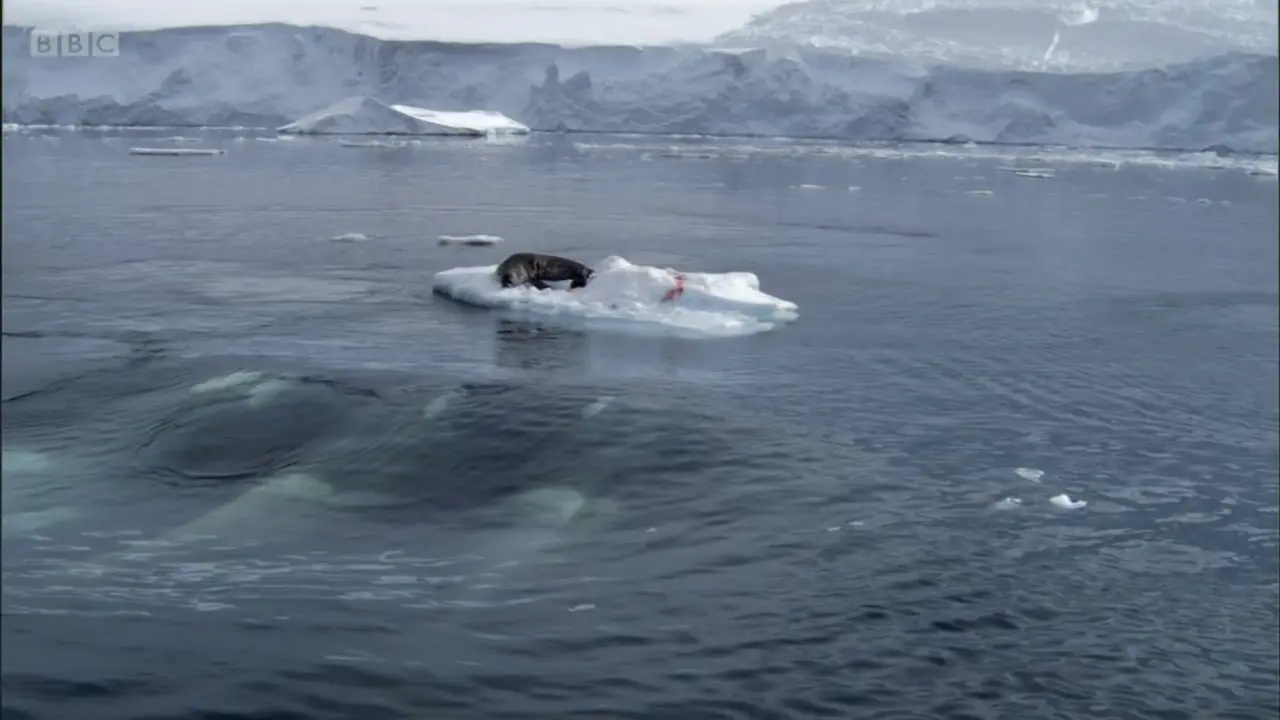
Marguerite Bay, Antarctica
"Type B" killer whales in Antarctica are specialist hunters of seals on pack ice. Still, they are careful in choosing their prey, preferring the relatively docile Weddel seals to the more troublesome crabeaters. Once a pod finds a seal resting on an ice floe, they rush at the target in a synchronised motion while remaining below the water. This generates a powerful wave that rocks the ice floe and crashes into the seal. The whales do this repeatedly, attempting to weard down and dislodge their prey into the water where it can be easily taken, tail-first. The whales also employ a range of tactics to further disorient the seal when it finally slips into the water, including sideswipes with their bodies to create turbulence and blowing bubbles to obfuscate the seal's vision while other whales go in for the kill. This wave-washing strategy, among the most complex hunting behaviours recorded in the natural world, is incredibly successful.
Location is based on cameraman Doug Allen's portfolio on Nature Picture Library [1]. The later episode's ("Summer") behind-the-scenes segment focuses on this sequence.
[Link 1]
[Link 1]
8
Weddell seal
Leptonychotes weddellii
LC
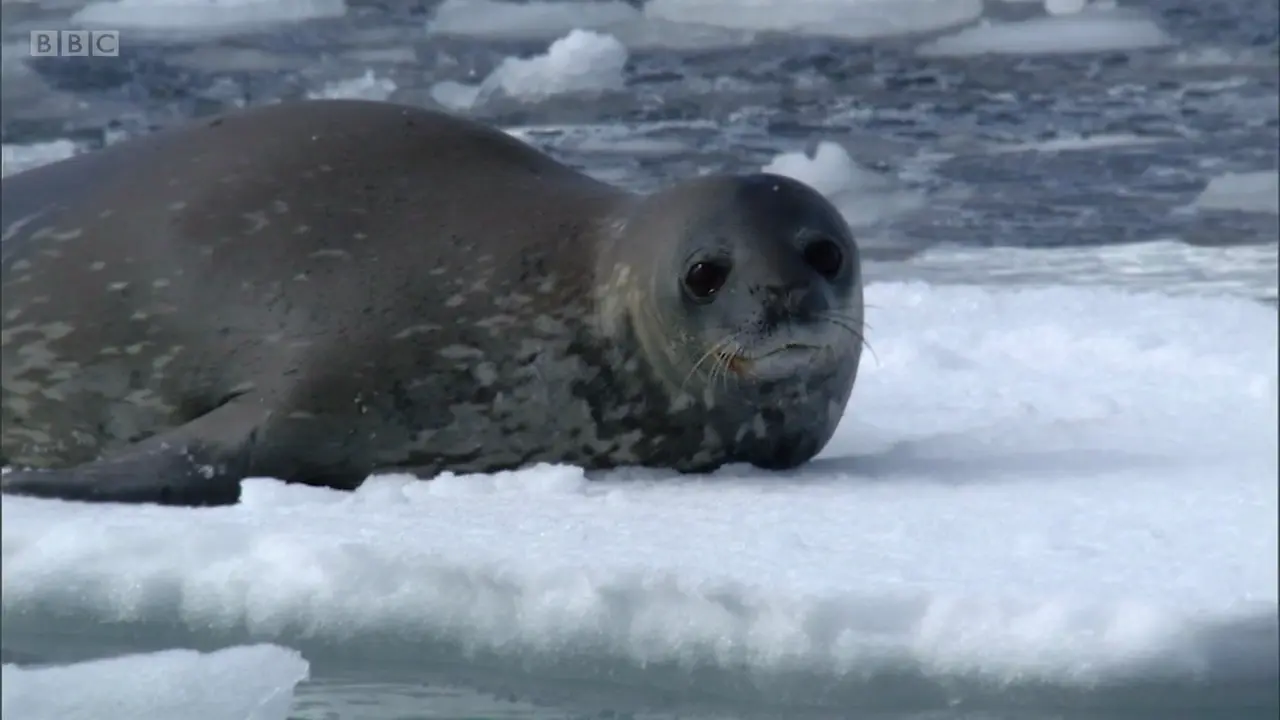
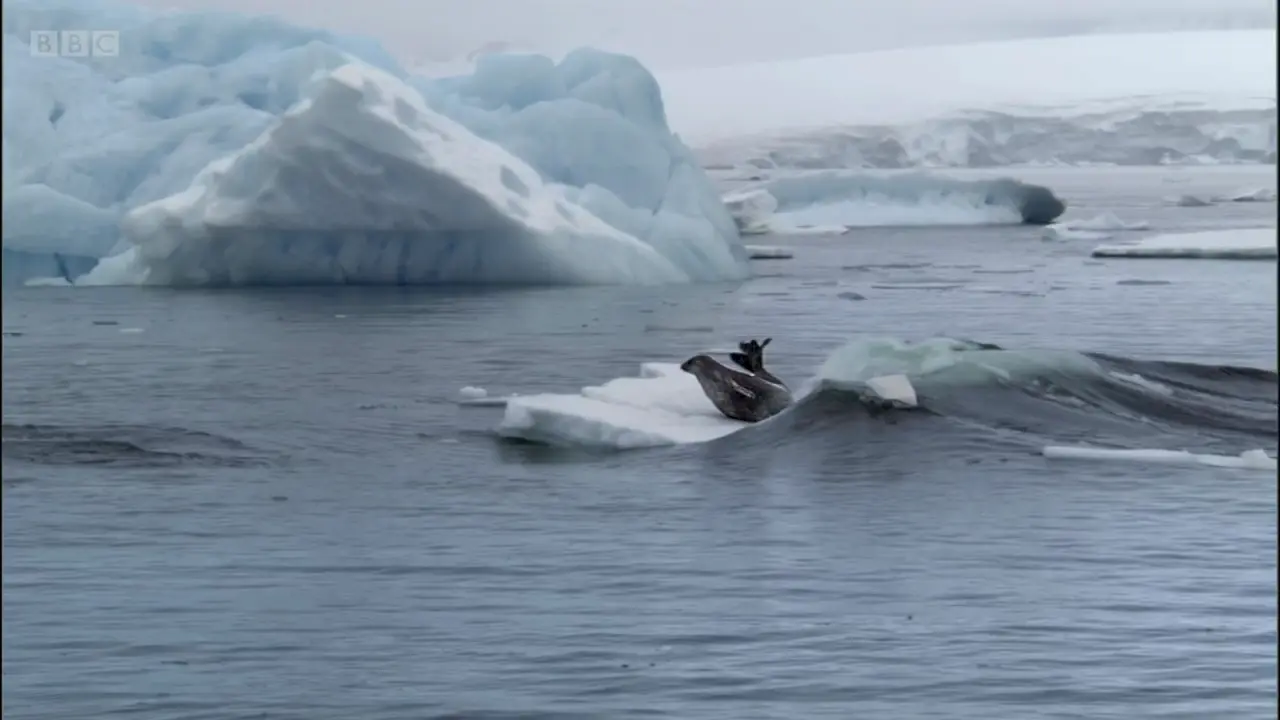
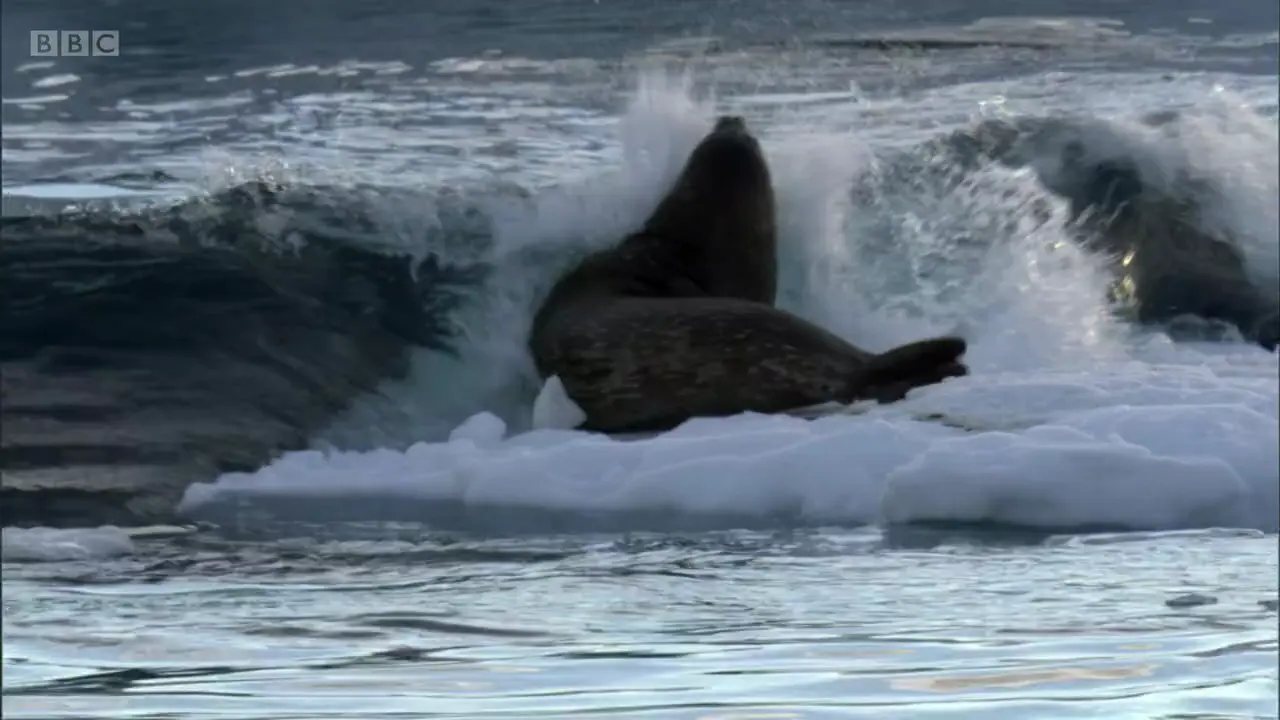
Marguerite Bay, Antarctica
Weddel seals are the favoured prey for "Type B" killer whales in Antarctica. A pod of whales swims in unison towards an ice floe, which generates a strong wave that rocks the flow and batters the seal resting on top. Despite its best efforts, the seal is eventually dislodged from the ice and slips into the water to within reach of the hunters' jaws.
Location is based on cameraman Doug Allen's portfolio on Nature Picture Library [1]
[Link 1]
[Link 1]
9
Antarctic minke whale
Balaenoptera bonaerensis
NT
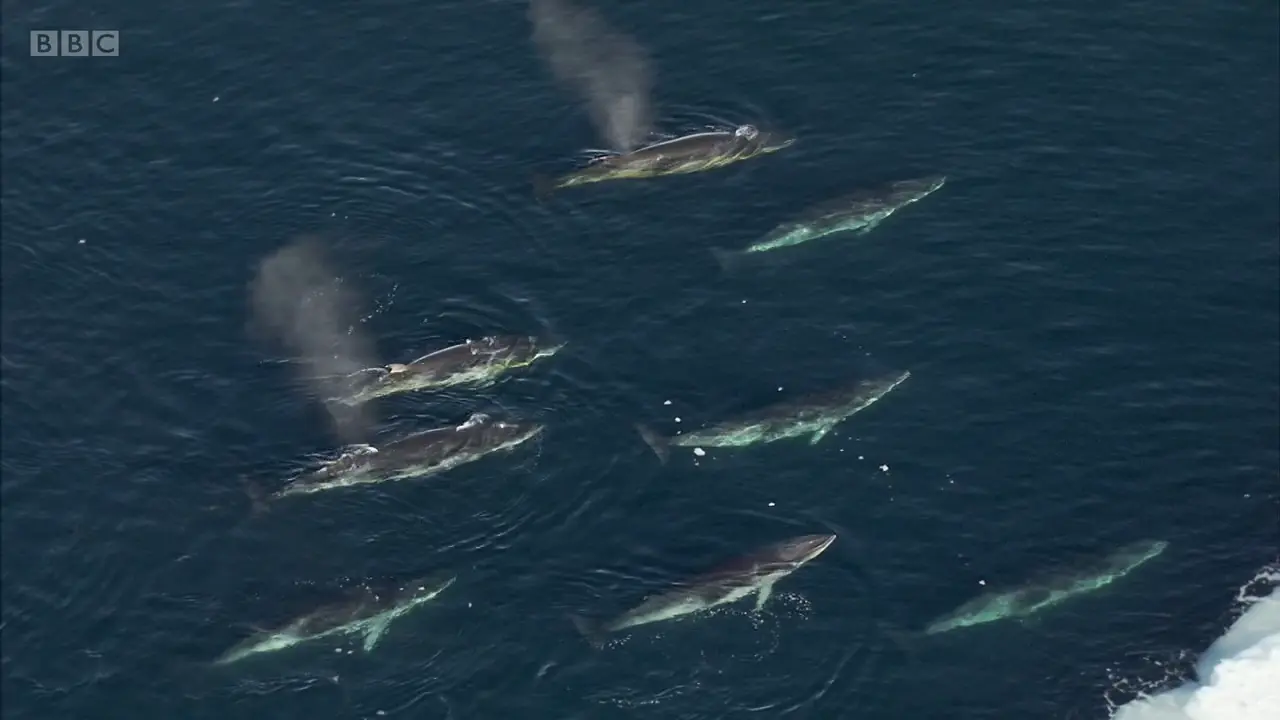
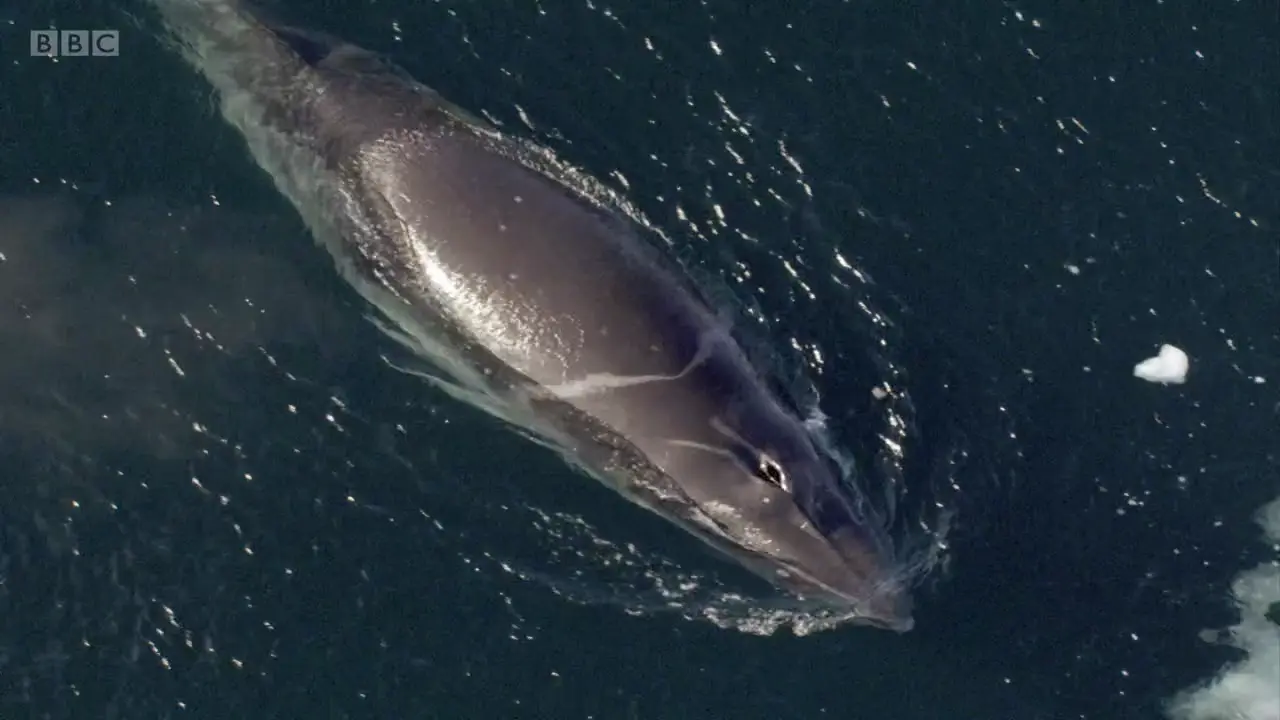
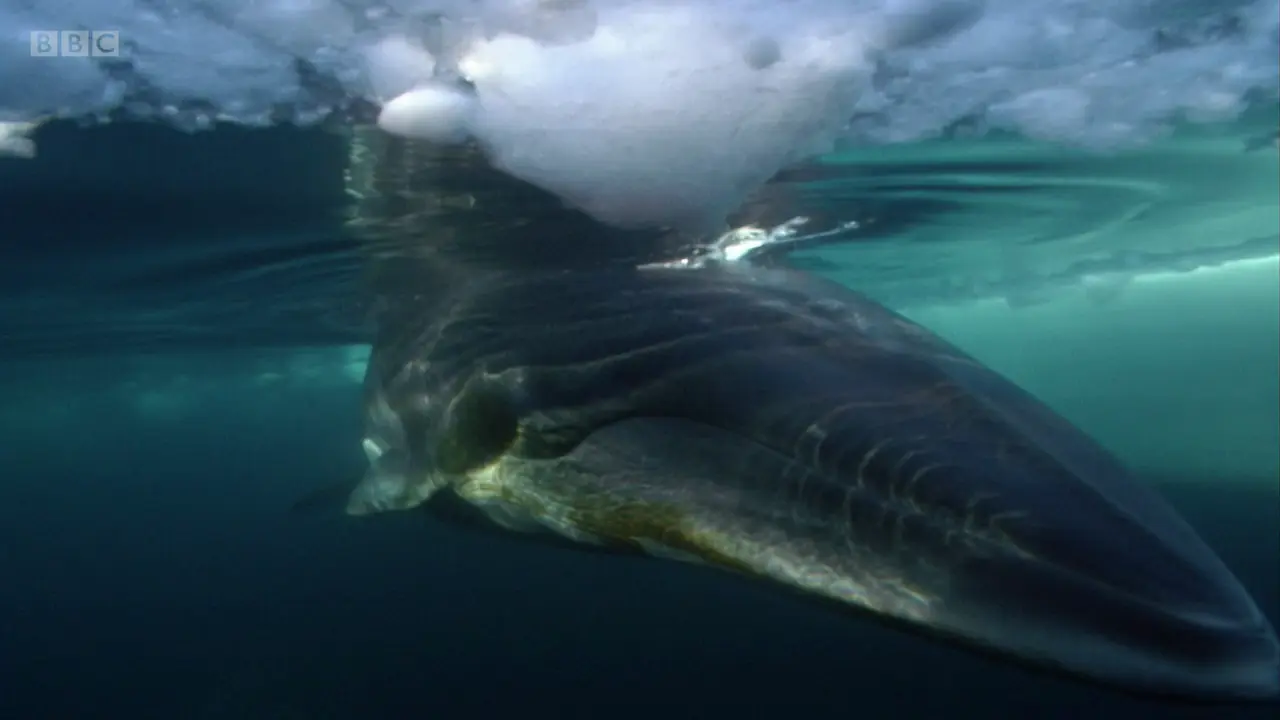
Antarctica
In the far south of Antarctic waters, the ice sheet remains unbroken year round. This is the furthest that even Antarctic minke whales can go; beyond it, there are no gaps in the ice to reach air to breathe.
I judge this to be an Antarctic minke whale rather than a drawf form of the Common minke whale due to no dark throat patch as seen at 32:42 and 32:49 ("Unlike the dwarf minke, the dark gray between the eye and flipper does not extend unto the ventral grooves of the throat to form a dark throat patch; there is instead an irregularly shaped line running from about the level of the eye to the anterior insertion of the flipper, merging with the light gray of the shoulder patch."). Also, in its second appearance in the episode, it is mentioned in the narration as further south than the site of the Killer whale attack on the seals (Marguerite Bay). Dwarf forms of the Common minke whale have only been observed as far south as the Gerlache Strait.
10
Bald notothen
Pagothenia borchgrevinki
NE
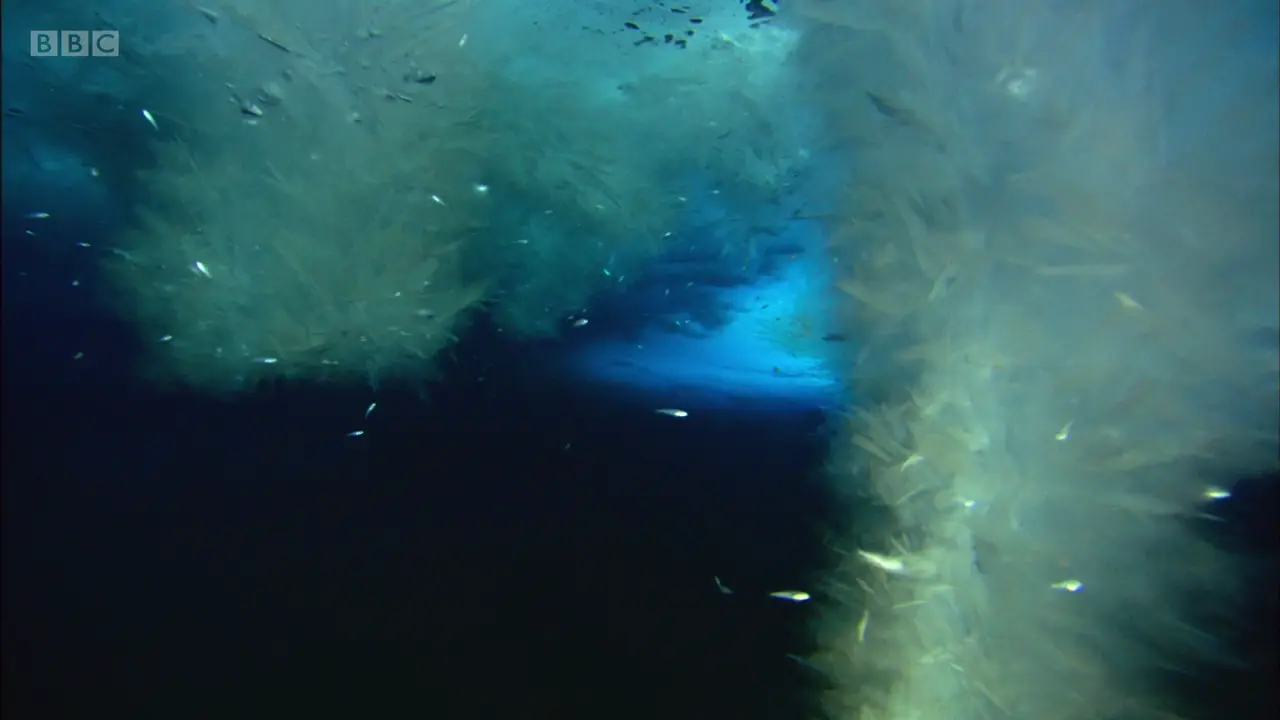
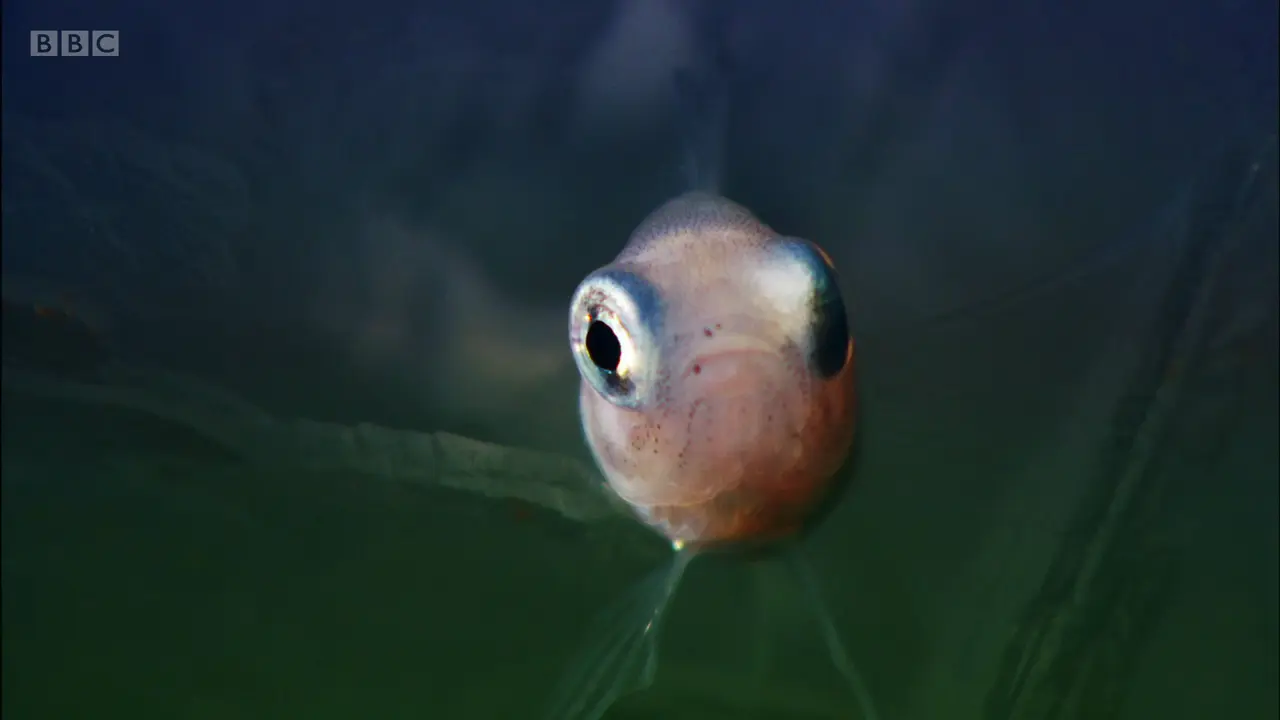
McMurdo Sound, Antarctica
There are parts of Antarctica's ice sheet in the far south that remain solid year round. Here, fish such the bald nothothen are able to survive on the stalactites of ice just below the surface by producing antifreeze glycoproteins, which stop ice crystals forming in the fluid within their bodies.
10
Giant Antarctic isopod
Glyptonotus antarcticus
NE
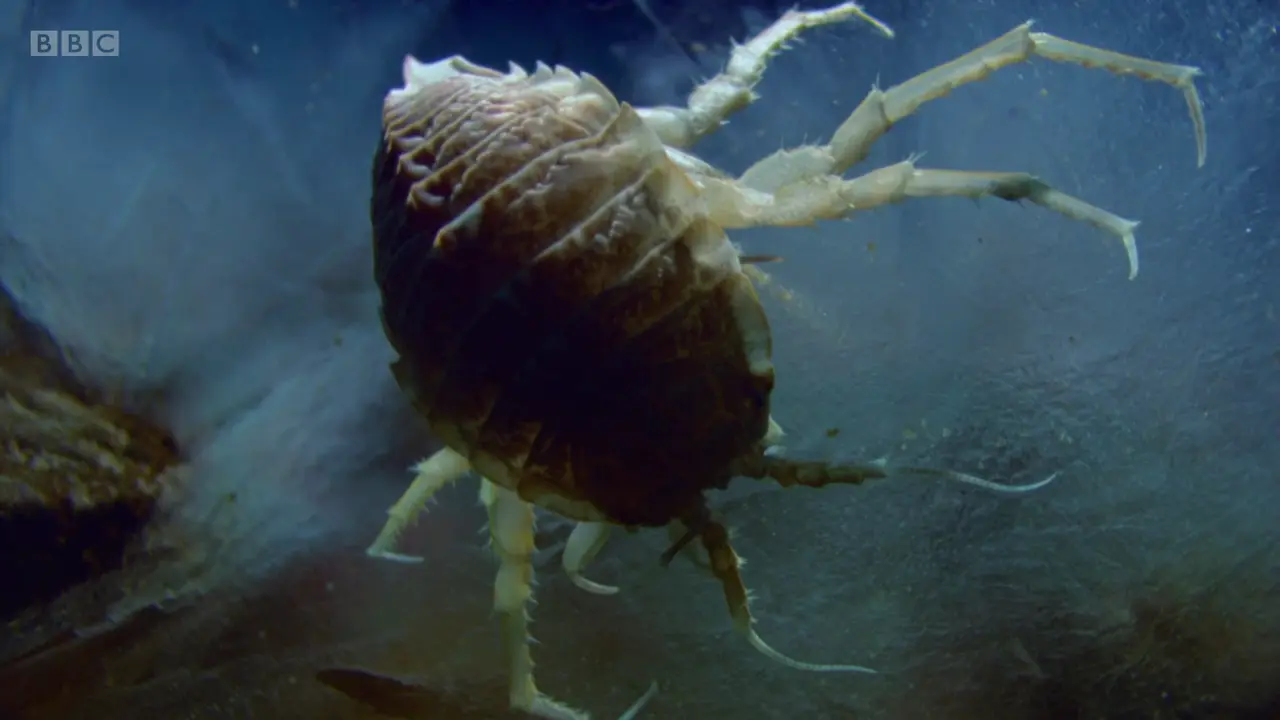
McMurdo Sound, Antarctica
There are parts of Antarctica's ice sheet in the far south that remain solid year round. Under these permanent cold conditions, animals such as Antarctic isopods exhibit polar gigantism, growing very slowly but reaching much larger sizes than similar organisms elsewhere.
10
Sea spider sp.
[genus Colossendeis]
?
![Sea spider sp. ([genus Colossendeis]) as shown in Frozen Planet - To the Ends of the Earth](Frozen Planet/To the Ends of the Earth - 26 Oct 2011/00_41_39-2024-04-12-21h36m21s227.webp)
McMurdo Sound, Antarctica
There are parts of Antarctica's ice sheet in the far south that remain solid year round. Under these permanent cold conditions, marine arthropods exhibit polar gigantism. "Sea spiders" here grow to a leg span of almost half a metre.
All species in Colossendeidae have four pairs of legs (as does the animal on screen), which rules out Decolopoda australis, Decolopoda qasimi and Pentacolossendeis reticulata (which have five pairs) and Dodecolopoda mawsoni (with six pairs). The narration says "this so-called "sea spider" has legs that span half a metre", so this must be one of the larger species of Colossendeis. According to one study [1], there are at least 4 Colossendeis species to be found at McMurdo Sound, including C. australis, C. hoeki, C. megalonyx and C. scotti.
[Link 1]
[Link 1]